Featured

Project Tour: The Rural Poolside Escape
.
We’re excited to share that one of our recent outdoor projects was featured in the June/July 2025 issue of Reno + Decor!
View the Magazine Feature (Pages 26–27)
Tucked into the Hinchinbrooke countryside, this project turned a simple stretch of lawn behind a century-old farmhouse into a welcoming outdoor space, perfect for quick dips in the pool after work, easy weekends with family, and making the most of long summer evenings.




When we first visited the site, there was no landscaping, no clear division of space, just wide-open grass and plenty of potential. Our clients wanted a pool, but more than that, they wanted a place to relax, host family, and enjoy the outdoors without taking on high-maintenance upkeep.



The first step was figuring out where everything would go. We studied the sun patterns, views, and access points to determine the best location for the pool. Once that was mapped out, we shaped the layout around it, carving out spots for lounging, shade, and gathering, all while staying close to the house for easy access and flow.
We chose a fiberglass pool for its clean lines, speed of installation, and ease of maintenance. A local concrete and stone combo gave us a durable, low-fuss surface that still felt polished and refined.
See more outdoor spaces we’ve designed in our portfolio.


This property had a noticeable slope, which meant extra care was needed during excavation. We brought in local crews to manage grading and leveling, and reinforced the pool base to ensure long-term stability. A small extension to the concrete pad allowed us to nestle the pool comfortably into the landscape without cutting off usable yard space.
We also designed the pool layout to work with an existing structure on the property: a timberframe screened-in patio. This had been added prior to our involvement, and we were able to tie it into the new design visually and functionally, helping to frame the space and give the pool area a sense of enclosure and comfort.


Our clients wanted to spend more time in the water than taking care of it. Every material and feature we selected had that goal in mind. The materials we selected were all about keeping things simple and low-maintenance. The pool and patio surfaces are built to last, and discreet grading around the edges helps everything drain properly without fuss.
A black aluminum fence with vertical bars was added for safety, without blocking the open farmland views. Landscaping was kept simple and clean to let the space breathe.
If you’re planning a plunge pool or compact retreat, check out The Natural Backyard Project for more inspiration.

What began as an empty stretch of grass is now a finished, functional outdoor living area. The pool feels like it belongs, anchored to the house, shaped by the land, and designed for daily use. Even though it’s new, it feels settled in its surroundings.
We’re proud to see this project featured in Reno + Decor’s June/July 2025 issue and even prouder to bring this space to life for our clients.
Looking for ideas for your own outdoor space? Read our post on Dining Outdoors for seasonal tips that pair perfectly with a rural backyard like this.
When I walk into a century-old home, the floors are usually the first thing that catch my eye.
There’s something about old wood that just feels honest. The scuffs, the worn finish, the creaks as you step, it’s like the home is saying, “I’ve been here a while.” And that matters to me.
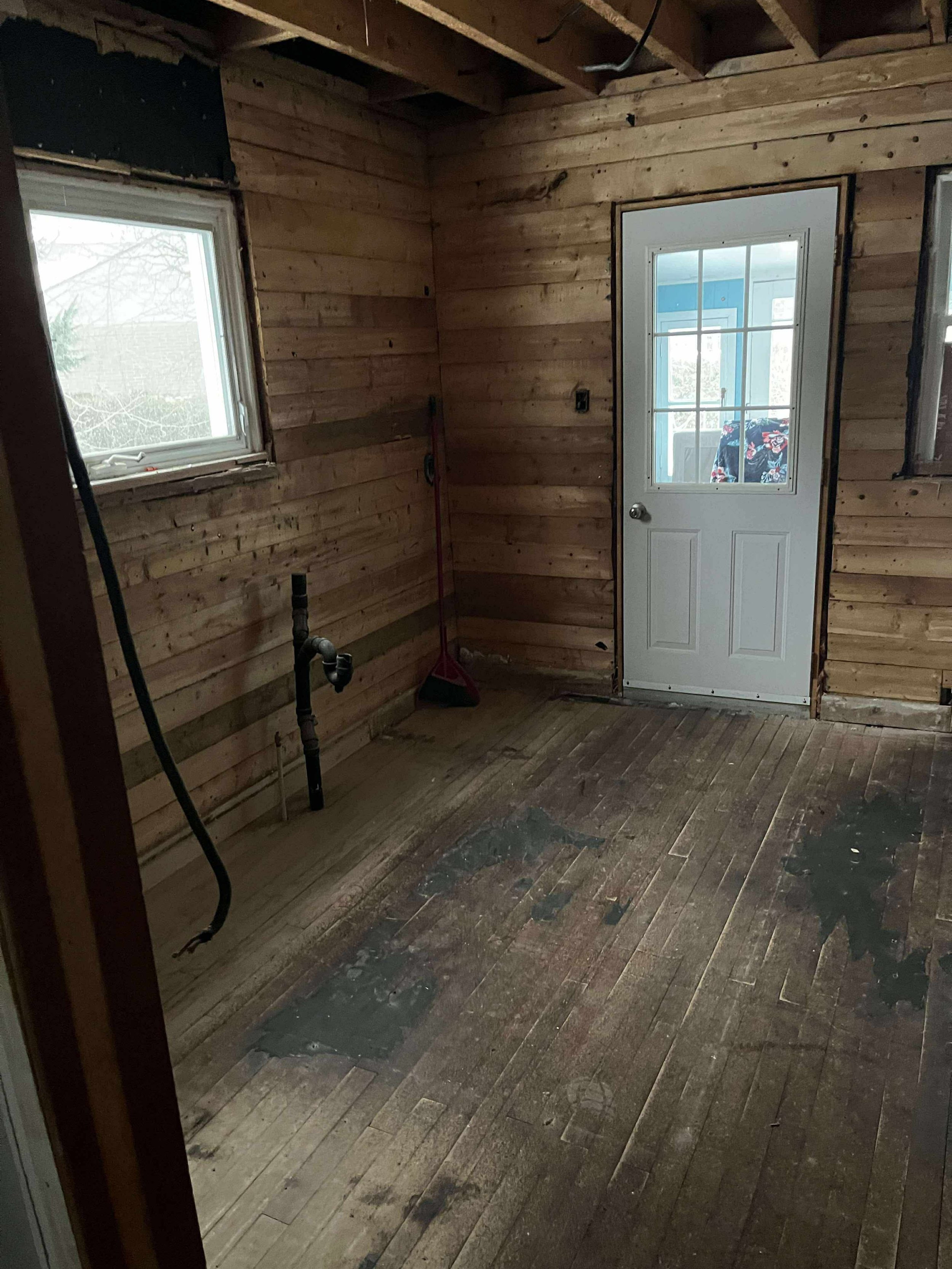
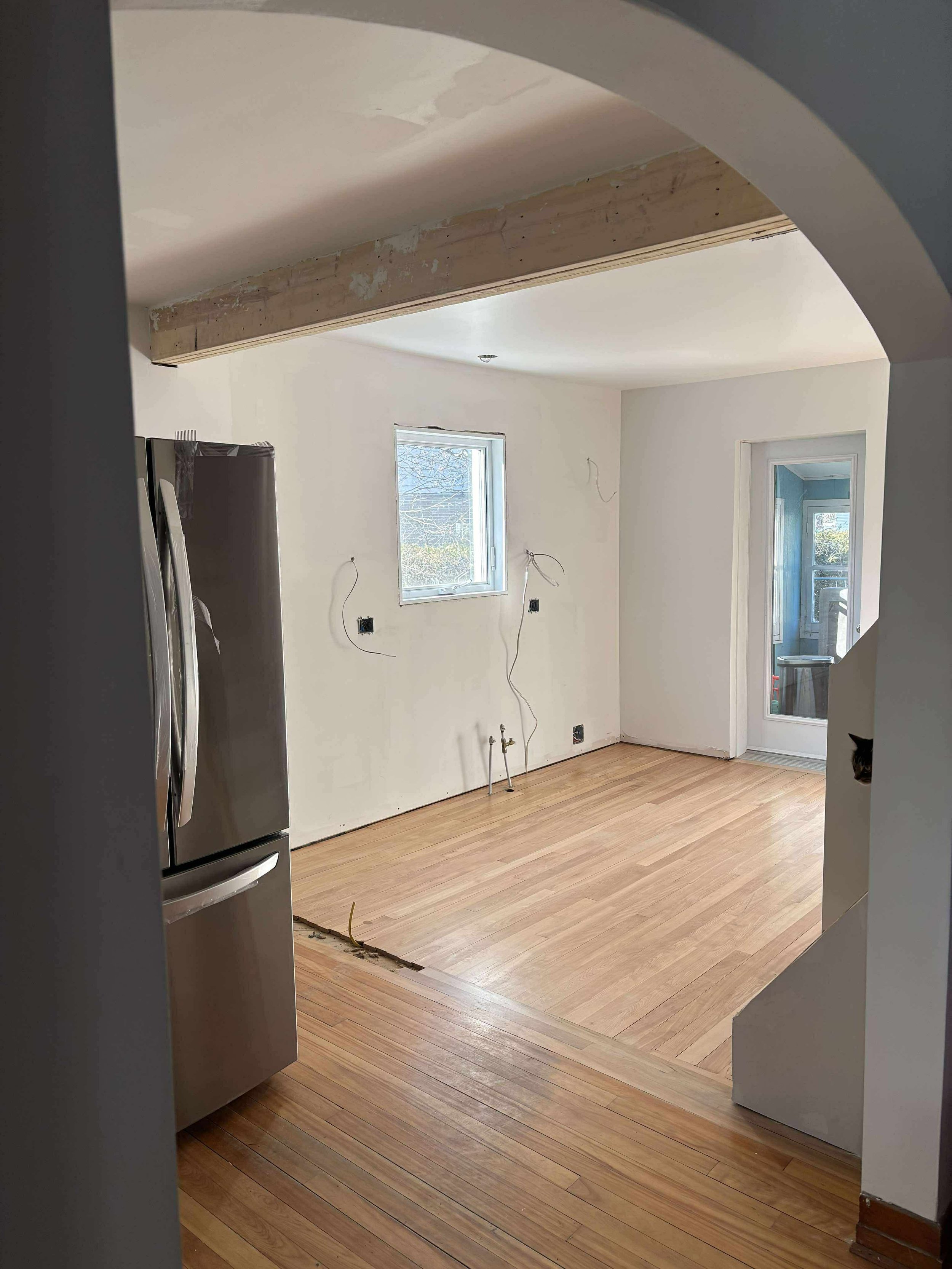
I’ve worked in a lot of homes where the first instinct is to start fresh with new floors, new doors, new everything. But sometimes, what’s already there is better than anything you could buy new.
Old wood floors carry stories. They’ve seen generations grow up, meals shared, and furniture rearranged a hundred times. They might not be perfect, but they have a presence that’s hard to replicate. That’s why, when I see original floors or a weathered staircase, my first thought isn’t “How can we replace this?” it’s “How can we work with this?”
If you're thinking about renovating your older home and want to keep its best features while updating what’s not working, my free Interior Design Guide is a great place to start, grab it here.


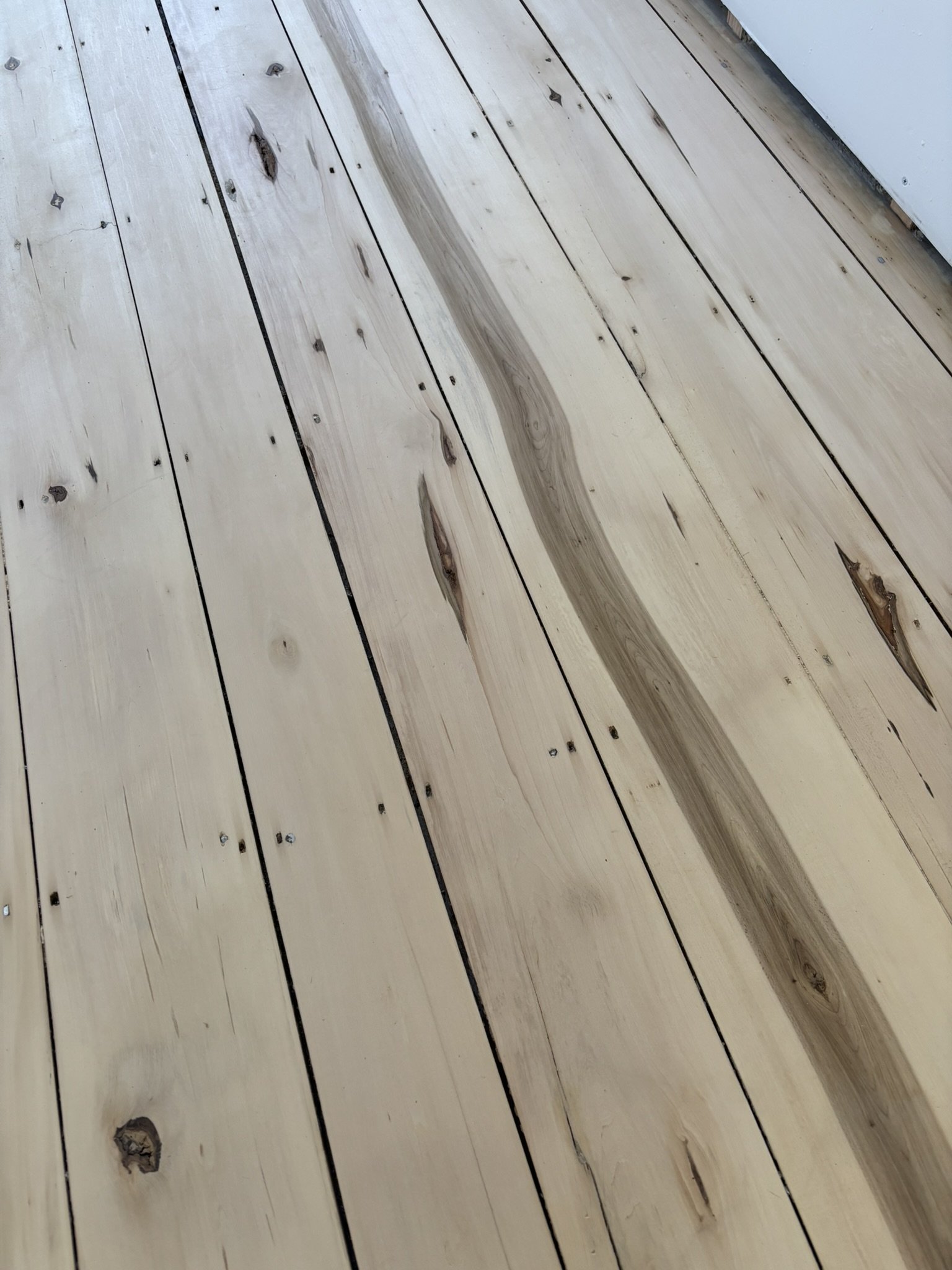
There’s dust on the floors, the baseboards are missing, and the room hasn’t quite come together yet, but even then, the character shines through.
One of my favorite parts of the job is designing around these existing details, letting the wood do the talking, and bringing the space into the present without losing the charm that makes it special.


There’s no such thing as a flawless old home. The wood might be uneven, or a bit squeaky. But it’s real. That’s what draws me to these homes in the first place, there’s nothing cookie-cutter about them. And I know that for a lot of my clients, that’s what they love too.
Preserving original details isn’t always the easiest route, but it’s worth it. It adds something you can’t buy or build from scratch: a sense of place. A connection to what came before.

Right now, I’m working on a few homes from the late 1800s and early 1900s, and I can’t wait to share more of the process soon. Some of the spaces are still just ideas and measurements… but the materials? They’re already doing half the work!
So next time you walk through your home, take a second look at those old floors or that worn edge on the stair rail. There’s probably a story there. And if you’re planning a renovation, don’t be too quick to cover it up or replace these elements.
—Anika
If you're planning a renovation and want to bring more warmth and personality into your home and feel like we might be the right fit, I’d love to hear from you.
You can learn more about our signature interior design services or reach out directly right here.
Many outdoor spaces have amazing potential, but they often go unused simply because they’re not designed for the way we want to enjoy them. Whether it’s a porch, deck, or patio, the right touches can turn them into the perfect spot for dining, relaxing, and entertaining.
Imagine spending evenings with family and friends, dining outside under the stars, or enjoying a peaceful morning with coffee in hand, all in a space that feels just as comfortable and inviting as your home. Let’s make that happen.




01. Make Your Outdoor Space Feel Like a Room
Just like any room in your home, outdoor spaces need to feel intentional and cohesive. Adding elements like privacy screens, shades, or custom seating helps create a space that truly works for you. It’s about designing an outdoor area you’ll actually want to use, whether it’s for dining, lounging, or even working.
How We Can Help:
Design a space that fits your needs and style, from layout to seating.
Add elements like custom screens or drapery for privacy and shade.
Create multiple zones for dining, relaxing, or entertaining so you can enjoy your space in different ways.



02. Outdoor Dining, But Make It Effortless
Outdoor dining should be an experience—where you can sit back, relax, and enjoy every moment. We design dining areas that feel just as inviting and stylish as your indoor spaces, with custom-built tables, comfortable seating, and thoughtful touches like lighting and plants to bring it all together.
How We Can Help:
Design custom furniture that fits your space perfectly.
Source materials that are durable and elegant.
Add thoughtful details like lighting, textiles, and accessories that make the space feel special. We also love sourcing from local shops for unique, custom-made pieces that bring personality to a space. Check out our list of 9 local places to shop here!


03. Comfort That Keeps You Coming Back
Your outdoor space should be just as comfortable and practical as it is beautiful. Whether you’re hosting a dinner party or unwinding after a long day, we make sure every detail is designed with comfort in mind. From cozy seating to the right lighting, we create spaces that feel effortless to enjoy.
How We Can Help:
Plan a functional layout with comfortable seating for every occasion.
Add the right lighting to set the mood for evenings outside.
Create storage solutions that keep your space organized and easy to use.

Let’s Design Your Dream Outdoor Space
Your outdoor space should feel like an extension of your home—a place to relax, entertain, and connect with the people you love. Whether you’re dreaming of a cozy nook for slow mornings, a beautiful dining space for summer gatherings or even a plunge pool like we did in this project, the goal is to make it a space that fits your lifestyle. we’re here to bring your vision to life.
Get in touch, and let’s create a space you’ll enjoy all season long.
As a business owner working closely with so many incredible women, I’ve come to really appreciate how important it is to take a moment to celebrate the talent, passion, and dedication they bring to our communities, especially on International Women’s Day. Every year, I love using this day as a chance to shine a light on some of the amazing women I’ve had the pleasure of getting to know, work alongside, and be inspired by.
These women are doing everything from running businesses and offering valuable services to bringing beauty, creativity, and joy into people’s lives and I’m lucky to know them personally. This year, I’m excited to share the stories of nine talented women I’ve had the pleasure of getting to know, some right here in Ormstown and the surrounding area, and others from Montreal. I hope their journeys inspire you as much as they’ve inspired me.
If you missed last year’s International Women’s Day blog, I’d love for you to check it out here, where I highlighted even more amazing women-owned businesses!
Registered Holistic Nutrition consultant (R.H.N.), C.T.I. Life coach, Certified Metabolic Balance coach.



What do you love most about the work you do?
I love connecting with my clients.
I am passionate about helping women break free from the cycle of battling with their bodies, their weight, and the constant guilt they often place on themselves.
I find it incredibly rewarding to guide my clients in reconnecting with their bodies, shifting from a mindset where they feel like their bodies are betraying them or need to be "fixed," to one of self-appreciation, gratitude, and excitement about nurturing and taking care of themselves.
What is one thing people might not realize about your profession?
I have three to share:
1)That it’s not an ALL OR NOTHING game. Every small change adds up and pays big dividends in your health bank.
2)That healthy food and a solid self-care routine should not be boring or punishing. It’s all about finding the win-win, making your healthy food delicious and satisfying and cultivating a routine that feels effortless and enjoyable.
3)Hating and shaming on yourself, punishing, rigid, restrictive diets NEVER work. In fact they keep you in the yo-yo cycle. Step one always needs to be focusing on accepting your body as it is right now. That’s how you create a solid foundation for lasting change.
What activities or hobbies do you enjoy outside of your professional life?
I love everything food – sourcing it, cooking it, sharing it, eating it, pairing it with delicious wine…
I enjoy reading as an essential part of my morning and evening routines. My morning genre is: psychology, spirituality, neuroscience, self-help. Evenings are memoirs, historic fiction and sometimes fantasy.
I also love walking, gardening, entertaining, caring for my home and my small flock of laying hens.
What’s a piece of advice that has influenced you the most?
TRUST! Trusting my intuition or my gut even if it isn’t always the obvious or logical choice. And trusting that things are unfolding as they should – comparing myself to others is the thief of my joy.
Real Estate Broker

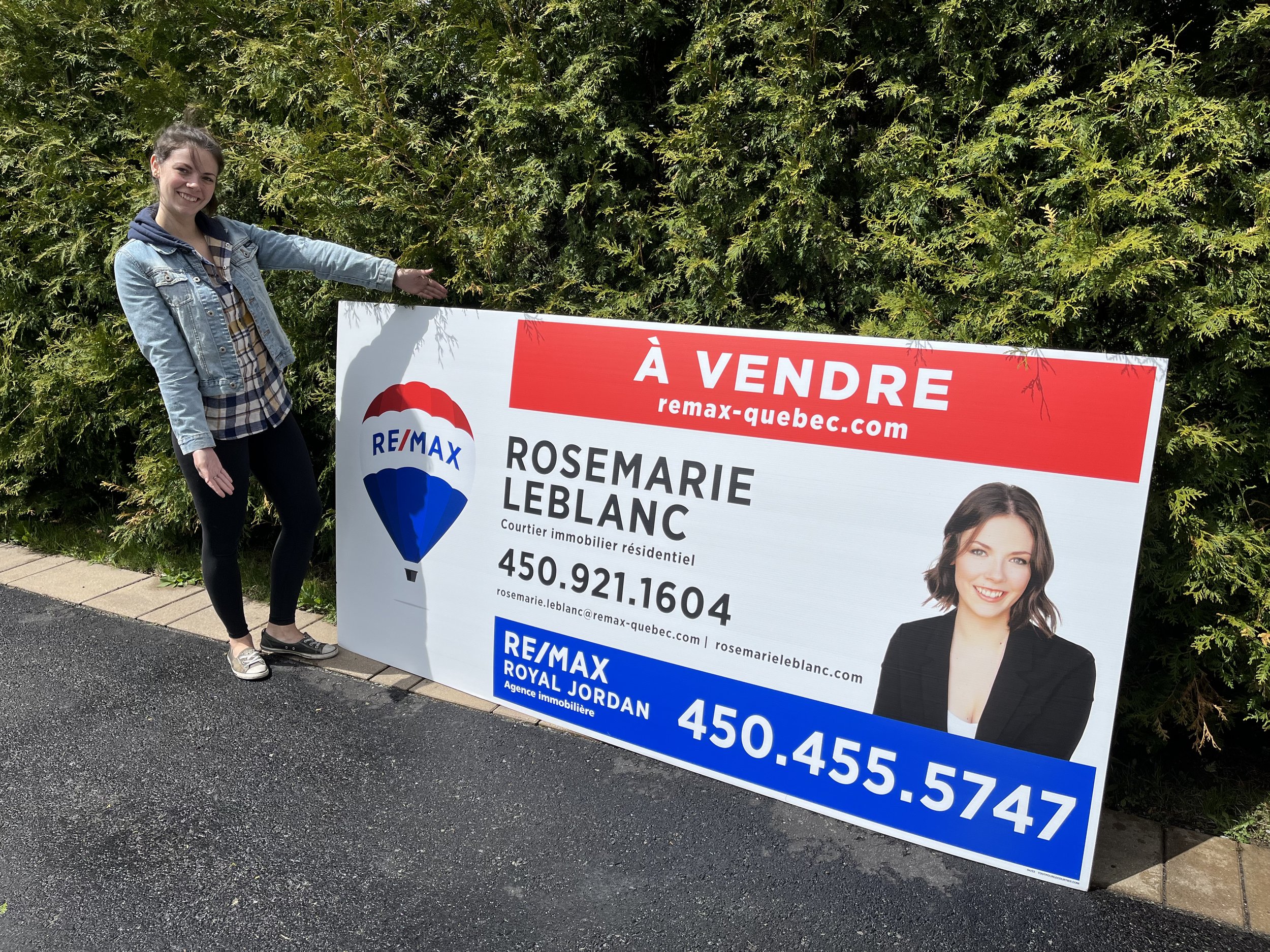


What do you love most about the work you do?
What I love most about my job is helping my clients acquire their dream property. The process can sometimes take time, and finding the perfect home isn’t always easy. There can be moments of disappointment, especially when a great opportunity is missed, but the satisfaction of finally finding the perfect property always makes it worthwhile. My favorite moment is the signing at the notary’s office—seeing the excitement in my clients’ eyes when they finally receive the keys is truly rewarding.
What is one thing people might not realize about your profession?
Being a real estate broker is much more than just helping people buy or sell a home. Every day, I wear many hats: designer to envision a space’s potential, inspector to spot every detail, psychologist to reassure and advise, mediator to facilitate negotiations… and so much more! My job requires versatility, attentiveness, and passion, and that’s what makes it so exciting.
What activities or hobbies do you enjoy outside of your professional life?
I am a creative person with a hidden talent for decoration, illustration, and even cake decorating. In my family, I’m officially the dessert expert!
What’s a piece of advice that has influenced you the most?
Don't be afraid to take the leap. I have worked in several fields over the years—as a farmer and dairy producer, a graphic designer, an administrative assistant for a real estate broker, and now as a real estate broker myself. When I finally decided to go out on my own, I left everything behind to dedicate 100% of my efforts to my career, without any guaranteed income. It hasn’t always been easy, but through hard work, determination, and the invaluable support of my family, friends, and wonderful clients over the years, I can proudly say that every sacrifice was worth it.
Florist shop owner, designer

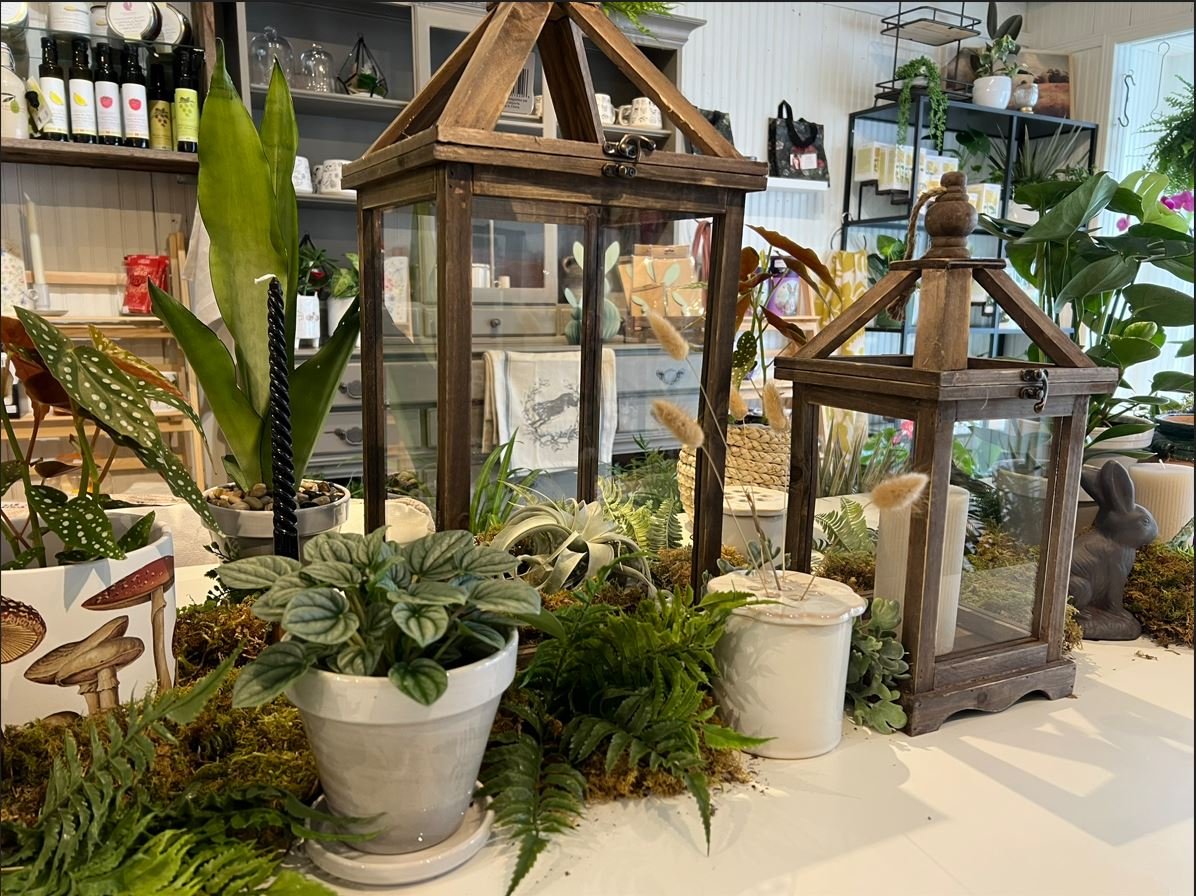
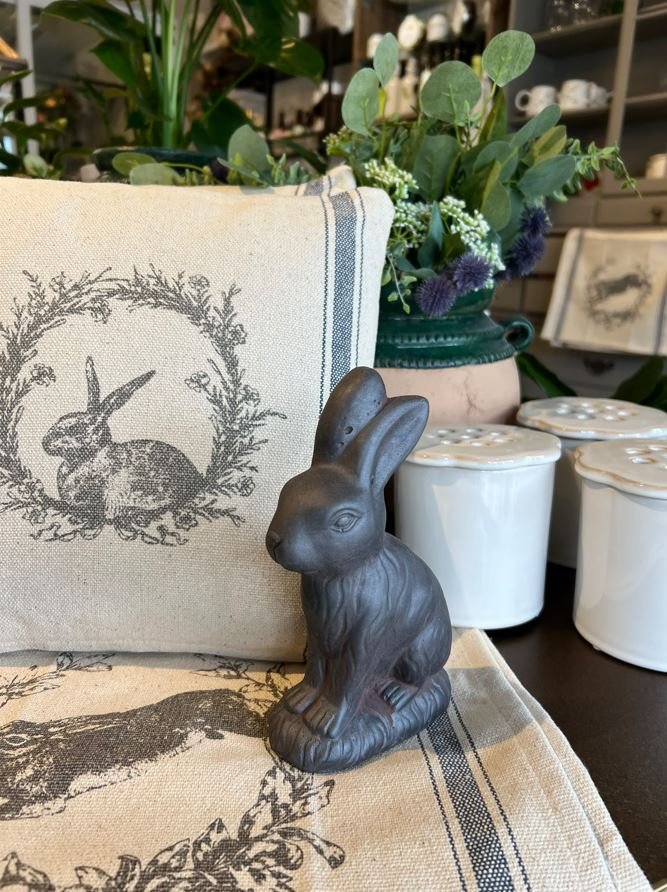

What do you love most about the work you do?
Creating. Taking loose flowers from a bucket and creating a unique bouquet or arrangement is amazing and rewarding. Creating with plants is very calming as well. Plants are mostly green but creating a garden with their different tones and shapes brings the indoor in and that is very me.
What is one thing people might not realize about your profession?
People might not realize all the behind the scene to get to the final result. From products availability to delivery, we have to be able to adjust and turn on a dime.
What activities or hobbies do you enjoy outside of your professional life?
I love traveling! I’ a very very visual person so I need to be stimulated wether with hundreds year old homes in Ireland to huge evergreens on Vancouver island to cloud forest in Costa Rica to historical Paris. I love design and architecture as well which I also see in my travels.
What’s a piece of advice that has influenced you the most?
Trust yourself. Easy as that. When something doesn’t sit well, you will know and when something is right, you will also know. When you trust yourself, decision are easier to take and when you are a business owner, you need to rely on that.
Photographer





What do you love most about the work you do?
What I love most is the connection I build with the people I photograph. Each session—whether a wedding, family shoot, or even a final portrait—offers a glimpse into someone’s world. Photography requires trust and vulnerability, and being invited to capture both joyful milestones and tender moments is an honor. Preserving a piece of someone’s story, giving them a tangible memory of who they were—that’s why I love what I do.
What is one thing people might not realize about your profession?
Many don’t realize the time and investment behind photography. While we showcase the joyful, creative side, there’s a hidden workload—planning, editing, and curating every image. A one-hour session often means days of work. Photographers also invest heavily in gear, software, and storage to maintain quality. Yet, what clients see is the experience we create, not the long hours behind the scenes. It’s a labor of love, far less glamorous than it appears.
What activities or hobbies do you enjoy outside of your professional life?
I love being outdoors year-round. In winter, I cross-country ski and snowshoe; in spring and fall, I hike, especially in the Adirondacks. Summer is all about water—swimming, canoeing, and camping. Nature keeps me grounded, energized, and happy no matter the season.
What’s a piece of advice that has influenced you the most?
People love their photos more when they have a great experience. It’s not just about perfect lighting or flawless shots—it’s about how they felt in the moment. Not every session goes perfectly, and circumstances vary, but my job isn’t just to create beautiful images. It’s to make people feel comfortable, seen, and valued. That’s what they remember long after the photos are delivered.
Hair stylist



What do you love most about the work you do?
I love the creativity and making my clients feel good about themselves. It’s very rewarding and fulfilling.
What is one thing people might not realize about your profession?
I learn new techniques & trends all the time.
What activities or hobbies do you enjoy outside of your professional life?
Horseback riding! I love being around my horses and even doing chores lol.
What’s a piece of advice that has influenced you the most?
Be confident and have trust in yourself.
President & Founder of KL Marketing Inc.





What do you love most about the work you do?
I'm a huge believer in storytelling. I love a good story, and I believe that sharing a powerful story with the world should be three things: unique, meaningful, and visually appealing. My work empowers me to help brands share their purpose through social media, marketing channels, podcasts, events and more, and I am continuously fuelled by the ideation process that leads to creatings something that stands out. I pull the beauty out of all things in life, and the result always inspires me to keep pushing.
What is one thing people might not realize about your profession?
It's not just posting pictures on Instagram. It's strategy, content creation, copywriting, editing, translating, and so on. A lot of love, and a lot of people go into the final result you see on the other end.
What activities or hobbies do you enjoy outside of your professional life?
In all my spare time - lol! I love to read and cook. I love weight training, Pilates and outdoor activities in the warmer months. I'm passionate about fashion and beauty, and also daydream about so many travel destinations.
What’s a piece of advice that has influenced you the most?
You can't accomplish anything great if you don't just start somewhere. It won't be perfect... but no one will notice except for you.
IG Personal | IG Professional | TikTok | Hudson Holiday Market | Illume Festival
Director of L’Ecole de danse Neva Shelton and have been since starting the school in 1980 (soon to retire!)





What do you love most about the work you do?
I love teaching; even after more than 40 years of teaching, even when I am tired, once I start teaching, I am energized, and I always leave in good spirits.
What is one thing people might not realize about your profession?
There are so many aspects of what I do, many more than just teaching because it entails running a business as well (not my strongest skill) The teaching alone has entailed years of study covering anatomy, psychology, pedagogy as well as exams in the syllabus I teach, the Cecchetti Syllabus. To obtain a higher level of teaching I traveled to Ottawa bi-weekly for 2 years and studied with Joyce Shietze, the then chairperson of Cecchetti CANADA and founding director of the School of Dance in Ottawa.
What activities or hobbies do you enjoy outside of your professional life?
I have always tried to be involved in my community, participating in many committees over the years; I was a founding member of the MRC’s Comité Culturel. Although I am still volunteering, I now try to spend as much time as possible with my grandchildren and helping on the farms of both of my children.
What’s a piece of advice that has influenced you the most?
Although I studied Social Work, after a friend had a bad car accident, I stepped in to replace her as a ballet teacher since we had the same background training. I soon realized that I really loved teaching so I decided trying my hand at starting my own school when we moved to Ormstown. The rest, as they say’ is history.
Brand Designer




What do you love most about the work you do?
I love that I’ve had the opportunity to collaborate with a diverse range of creative founders to tell their stories through impactful brand design.
What is one thing people might not realize about your profession?
Good design will never be cheap. It’s not about creating an appealing logo, it’s about depicting your brand’s purpose and developing a visual identity that is unique to you through a strategic brand strategy. In order for me to design a proper logo, I need to understand your story, your target audience, and your goal as a brand to remain authentic to your values.
What activities or hobbies do you enjoy outside of your professional life?
Cooking and baking have always been a hobby of mine, so much that if I wasn’t a designer, I probably would have pursued culinary school. It has served as an outlet for creativity, inspiration, and exploring. I’m currently trying to nail baking a good sourdough loaf.
What’s a piece of advice that has influenced you the most?
Step away from the screen. It sounds simple and counterintuitive as a designer for the digital space, but sometimes my best work comes from disconnecting. We tend to forget that there are other ways to explore our creativity beyond our devices.
Tablescape Stylist and Etiquette Coach




What do you love most about the work you do?
Bringing people together around the table. The table holds deep significance in both personal and professional life—it’s where we create emotional memories, educate our children, and make important decisions. Taking care of the table is an act of love, self-care, and care for others. It’s a fully intentional habit that transforms everyday moments into something special.
What is one thing people might not realize about your profession?
It involves a lot of studying, especially in etiquette, as it evolves over time with cultural shifts and trends. Staying up to date requires continuous learning and research.
What activities or hobbies do you enjoy outside of your professional life?
Reading books, enjoying moments of solitude, and entertaining family and friends
What’s a piece of advice that has influenced you the most?
Be myself and trust my instincts. It sounds simple, but in reality, it takes courage and consistency.
I hope you’ve enjoyed getting to know these incredible women as much as I have. Their passion and dedication inspire me every day, and I’m so grateful to have them as part of our community.
Last year, I featured another group of inspiring local women in business—if you’d like to meet them too, you can check out the post here.
Are there any local women-owned businesses that inspire you?
If you know a local woman in business who inspires you, I’d love to hear—please share her name in the comments! Let’s keep celebrating and supporting the amazing women around us.
There’s something special about historic homes—the stories they hold, the craftsmanship that stands the test of time, and the feeling of stepping into a space that holds a piece of history. But when it comes to renovating, the challenge is always the same: how do we bring a home into the present without losing its soul?
At Anika Schachtler Design, we believe that a historic home should feel both timeless and livable, honoring its past while embracing modern comfort.
We’ve worked on so many century homes, and the ones that feel the most timeless after a renovation are the ones where we respect their history while making them work for modern life. It’s not just about updating; it’s about breathing new life into a space in a way that feels effortless and true to the home’s original character.
Today, we’re sharing a few of the key elements that make all the difference in a historic home transformation. And if you’re dreaming of restoring your own historic home, check out our portfolio to see more of our past projects, or explore our blog for more design inspiration.

One of the first things we look at in an old home is the woodwork—floors, trim, doors, staircases. These details are often what give a home its warmth and authenticity.
Whenever possible, we love to keep and restore these features rather than replace them. Sanding down original floors, restaining them in a tone that enhances their history, or carefully repairing worn woodwork can instantly bring back the charm that might have been hidden under layers of paint or years of wear.
For homes where some of these elements are missing, we source reclaimed materials or work with artisans who can recreate details that seamlessly blend with the old.


Many historic homes weren’t designed for the way we live today—small rooms, chopped-up layouts, and limited natural light. While opening up a floor plan can make sense, we always approach it with a careful hand.
Instead of completely gutting a space, we look for ways to create flow while keeping the home’s character intact. That might mean widening a doorway instead of removing a wall, adding glass-paneled interior doors to maintain separation while allowing light through, or repurposing a formal dining room into a cozy sitting area without losing the charm of its original details.

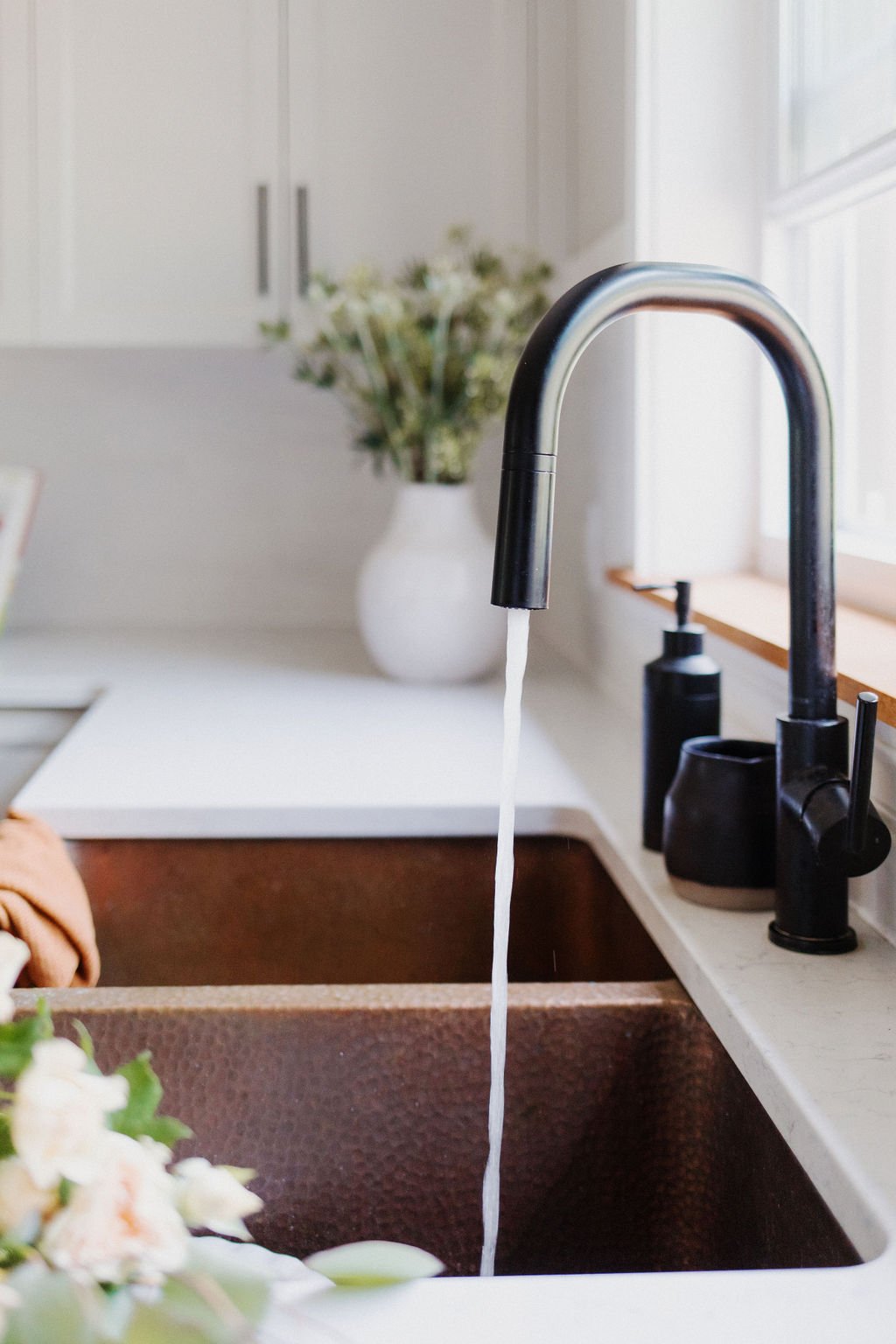
A successful historic renovation isn’t about making everything look old—it’s about balancing old and new in a way that feels natural.
Pairing original wood floors with timeless, high-quality stone countertops. Choosing modern soft furnishings with a classic shape that complements vintage pieces. These small decisions add up to a home that feels cohesive and considered.


What really makes a historic home shine are the little details that nod to its past while making it feel fresh.
We love incorporating elements like custom millwork, built-ins that match the original era, or even reusing salvaged doors. These touches help tell the home’s story while ensuring that updates feel intentional rather than forced.

If you’re dreaming of restoring your historic home but aren’t sure where to start, we’ve put together a guide to help you navigate the process. Download our free Interior Design Guide here—it’s filled with helpful insights to make your renovation feel less overwhelming and more exciting.
Looking for more ideas on designing with history in mind? Check out some of our other blog posts here, where we share design inspiration, renovation tips, and insights from our latest projects.
And if you're looking for a designer who truly understands historic homes, reach out here—we’d love to hear about your project and see if we’re the right fit.
The holidays are just around the corner, and if you’re lucky enough to call a century-old home your own, you already have the perfect backdrop for creating magical memories. These homes hold so much history and character, making them the ultimate setting for warm and welcoming gatherings. With a few thoughtful touches, you can bring out the best in your space and host a holiday that feels both timeless and uniquely yours.
Here are five simple ways to make your holiday hosting effortless and memorable:




Century-old homes often have unique layouts with distinct rooms rather than open-plan designs. Instead of altering the flow of your home, work with it by creating areas that naturally transition into one another. For example:
Arrange seating to encourage conversation, with chairs and couches grouped together near the fireplace or window.
Use sideboards or console tables as stations for drinks, desserts, or holiday cards, making it easy for guests to navigate.
Focus on creating distinct zones for dining, mingling, and relaxing, ensuring your guests feel comfortable wherever they are.
This approach makes your home feel effortlessly welcoming without compromising its charm.
Want more tips on creating functional, stylish spaces? Check out my free guide: Cozy Living in Your Century-Old Home.




Lighting plays a crucial role in setting the mood, especially in a century-old home. Follow these tips to create a warm, welcoming ambiance:
Turn off overhead lights to avoid harsh brightness and focus on softer lighting alternatives.
Layer your lighting with table lamps, floor lamps, string lights, and candles for a magical, layered glow.
Place light sources at varying heights to highlight architectural features like built-ins, high ceilings, or original molding.
Choose warm-toned bulbs for lamps and fixtures to enhance the cozy atmosphere.
Use uplighting strategically to draw attention to fireplaces, artwork, or other charming focal points in your home.
The right lighting not only transforms the mood of a space but also showcases the unique charm of your home’s character.

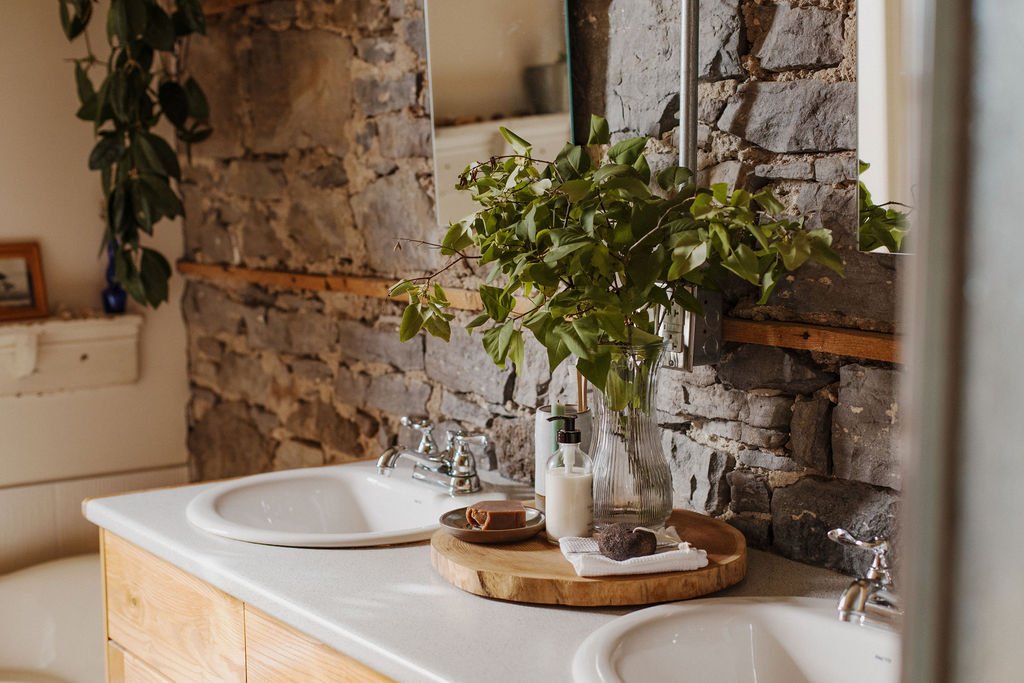
Use the features of your home as inspiration for your decor. If your home has antique wood trim, arched doorways, or a grand staircase, let these be the stars of your holiday setup:
Seasonal greenery: Wrap garlands around banisters or hang wreaths on pocket doors.
Vintage decor: Incorporate antique ornaments, heirloom linens, or classic holiday china.
Create a cozy nook with throw blankets and pillows in seasonal hues.
Every detail helps your guests experience the unique magic of your space.


Hosting with charm also means celebrating what’s unique to your area. Incorporate local artisan pieces into your decor or menu:
Use handcrafted pottery or locally sourced florals for centerpieces.
Feature local wines, cheeses, or baked goods to share the flavors of your community.
Gift your guests small, thoughtful tokens from nearby makers.
Discover more about going local with your decor and entertaining: Go Local: A Resource Guide.




Hosting in a century-old home can feel magical, but preparation is key to ensure everything runs smoothly:
Tidy and create a welcoming entry: Clear the entryway of clutter, add a cozy rug, and place a small bench or hooks for guests to easily store their coats and shoes.
Set up functional hosting stations:
Coat station: Add hangers or hooks for easy storage.
Drink station: Prepare a self-serve bar area to keep guests refreshed without constant hosting demands.
Appitizer station: Create a dedicated area with finger foods to keep the kitchen less crowded.
Decorate gradually: Start with key spaces like the dining room or living room to avoid overwhelm, and layer in smaller touches over time.
Plan for easy flow: Rearrange furniture slightly to allow for comfortable movement, especially in smaller or oddly shaped rooms typical of older homes.
The more thoughtfully you prepare, the more time you’ll have to relax and enjoy the celebrations alongside your guests.
For more decorating inspiration, check out my free guide on Decor Staples for Every Room: Get the Guide.

What’s your favorite way to prepare your home for the holidays? I’d love to hear about your traditions and how you’re bringing charm into your space this season. Drop your thoughts in the comments below!
Wishing you a beautiful and joyful holiday season.
Owning a century-old home is about more than its structure—it’s about creating a space that works for you while preserving its charm and character. Living in a historic home offers unique quirks and stories, and when it’s carefully designed, it can truly support your lifestyle, offering spaces that feel warm, inviting, and beautifully timeless.
As the seasons change and we all spend a little more time indoors, our homes should serve as comfortable retreats. Designing an older home to fit your needs today often requires more than a few minor updates—it’s about rethinking your space to combine comfort with classic elegance. This blog will give you a few simple yet impactful ideas to start, and if you’re ready to dive deeper, my Expert Guide to Cozy Living in Your Century-Old Home provides more inspiration to get you started.

Designing your century-old home with warmth and comfort in mind means paying attention to every detail—from colors and textures to the items you choose to display. Here are a few ways we like to get started creating a cozy space that honors your home’s unique history.
Choosing the right colors can transform a room, especially in older homes where architecture plays a starring role. A warm, neutral color scheme—think soft beiges, grays, and whites—can create a soothing backdrop that complements your home’s original features without overpowering them. Adding patterns and natural materials like wood and stone helps to avoid a flat look and instead creates depth, adding character to each space.
Selecting the right color and texture combinations, especially for historic homes, requires a thoughtful eye. My design work with clients considers the unique lighting, layout, and existing elements in each room, helping achieve a look that’s both timeless and inviting.
Textures play a significant role in creating cozy spaces. Natural fabrics like wool, velvet, and jute add warmth, and elements like sheepskin or natural fiber rugs can tie a room together beautifully. Layering textures thoughtfully can bring a sense of completeness to a room, but the balance is key—a skill that comes from experience in pairing materials to create a harmonious look.
Creating this cozy, well-rounded feel throughout a historic home is a delicate process. I guide my clients in choosing and arranging pieces that feel connected, helping each room feel personal, comfortable, and perfectly suited to their lifestyle.
Lighting is one of the most influential elements in any design, especially when creating a warm atmosphere in a historic home. Incorporating lamps with warm-toned bulbs, and lighting candles in the evening, brings an undeniable sense of relaxation and comfort. Opt for natural scents, like cedar or pine, to refresh a room and make it feel even more inviting.
Properly layering and selecting lighting makes a world of difference in older homes. Together, we create an ambiance that invites relaxation while highlighting the beauty of your space.

Living in a cozy, historic home goes beyond adding decor—it’s about designing meaningful spaces that support your life. Here are a few ways to consider using your space to serve you better.
Sometimes, the simplest change makes the biggest difference. Creating a sanctuary for yourself is a powerful way to bring rest and comfort into your daily routine. Whether it’s a quiet reading nook, a home library, or a comfy armchair with a throw blanket, carve out a place where you can unwind. Designing a sanctuary goes beyond décor; it’s about making space for relaxation in your home’s natural flow.
This is a prime example of where thoughtful, personalized design can transform your experience of home.
Ancestry and nostalgia are often part of what we love most about century-old homes. Use decor as an opportunity to display meaningful pieces, whether family heirlooms, travel mementos, or antique finds. Thoughtfully arranged displays not only bring charm but also add depth to each room. With clients, I curate displays that look intentional, not cluttered—creating spaces that feel both styled and deeply personal.
Your bedroom is the most personal space in the house. Set the right tone with pieces that feel special to you: a favorite photo, a soft lamp, a candle, and perhaps a touch of greenery on your nightstand. This simple arrangement adds calm and brings a little beauty to each day. In my designs, I look at bedrooms as not only places of rest but as reflections of how you want to start and end each day.

Creating a cozy, timeless home isn’t just about small changes; it’s about designing your space to work for you in every way. If you’re ready to explore what’s possible in your historic home, my Expert Guide to Cozy Living in Your Century-Old Home offers inspiration and practical ideas tailored to these unique spaces.
In this guide, you’ll find ideas and tips to elevate your home’s comfort and character, along with insight into the role of professional design in bringing your vision to life. If you’re ready to take your design beyond inspiration and into transformation, this guide is the perfect place to start.
If you love the charm of older homes like we do, these timeless design elements will keep your space feeling both classic and functional for years to come. Whether you're renovating or updating, these ideas are a beautiful way to honor the history of your home.

Why it works: Soft, neutral tones like whites, beiges, and gentle earthy shades create a peaceful and flexible backdrop that always feels right. They let you make decor changes without having to redo everything.
How to use it: Neutral tones on walls, larger furniture, or floors create a calm setting that lets the character of your century-old home shine through.

Why it works: Natural materials like wood, stone, brick and linen give warmth and texture to your home. These materials have been loved for generations because they age gracefully and bring an authentic feel.
How to use it: Hardwood floors, stone countertops, exposed wooden beams, and linen curtains are great ways to add depth and history to your home.

Why it works: Subway tile, which dates back to the early 1900s, remains a favorite for kitchens and bathrooms because of its clean, simple look.
How to use it: Use it as a backsplash in your kitchen or in the shower for a classic, timeless look that complements the historical charm of your home.

Why it works: Built-ins were a practical feature in many older homes and continue to add both storage and elegance without taking up extra space.
How to use it: Add built-in shelving in the living room or office, or custom cabinetry in the kitchen and bathroom to highlight the craftsmanship and maximize space in your home.

Why it works: Crown molding and intricate trim add refinement and elevate the architecture of any room.
How to use it: Restore the original crown molding in your older home or add decorative trim for a touch of timeless detail and craftsmanship.
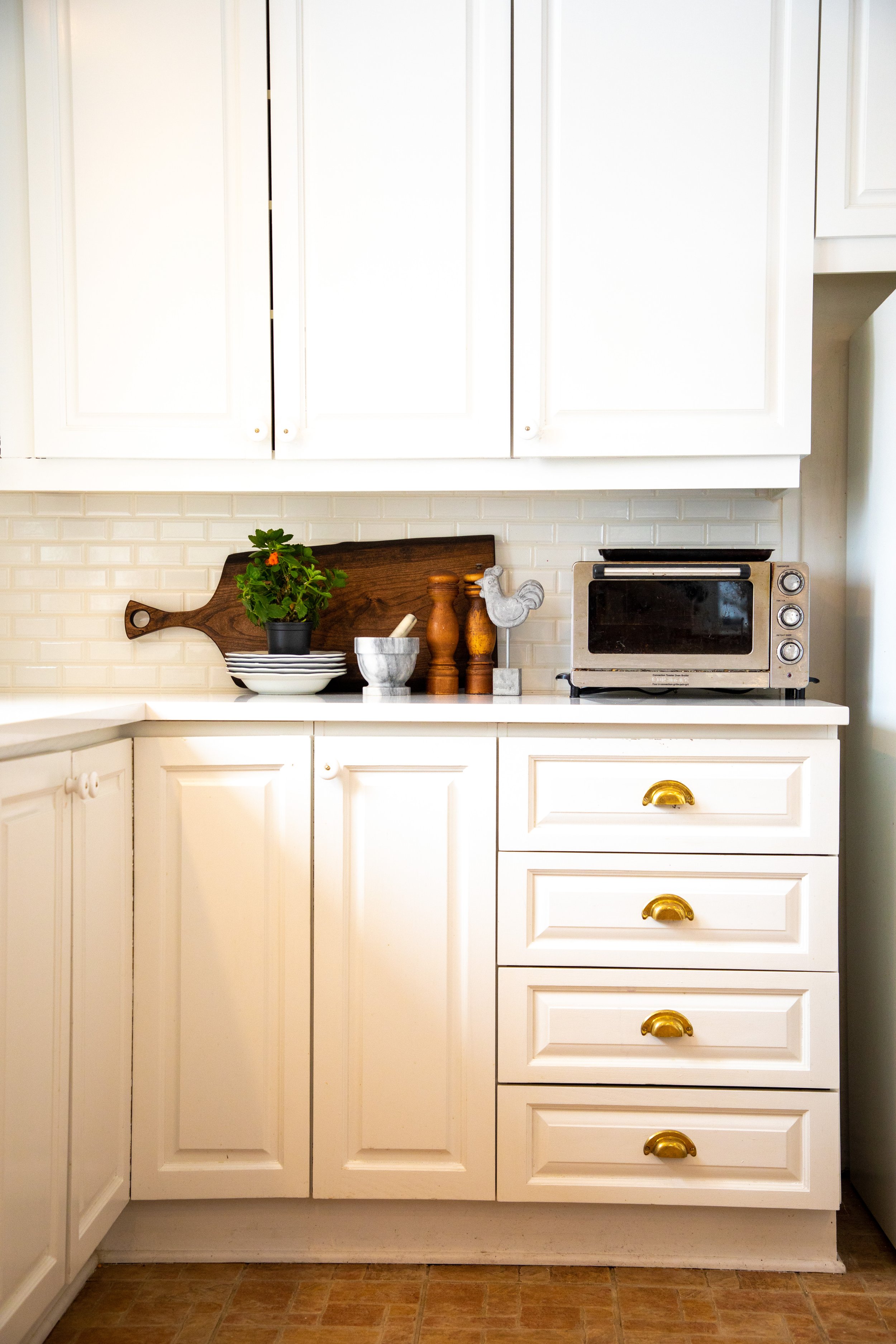
Why it works: White kitchens are bright, clean, and functional, and they never seem to go out of style.
How to use it: Think about white cabinetry, marble countertops, and brushed metal hardware to give your kitchen a timeless, refreshed look while keeping the charm of your home intact.
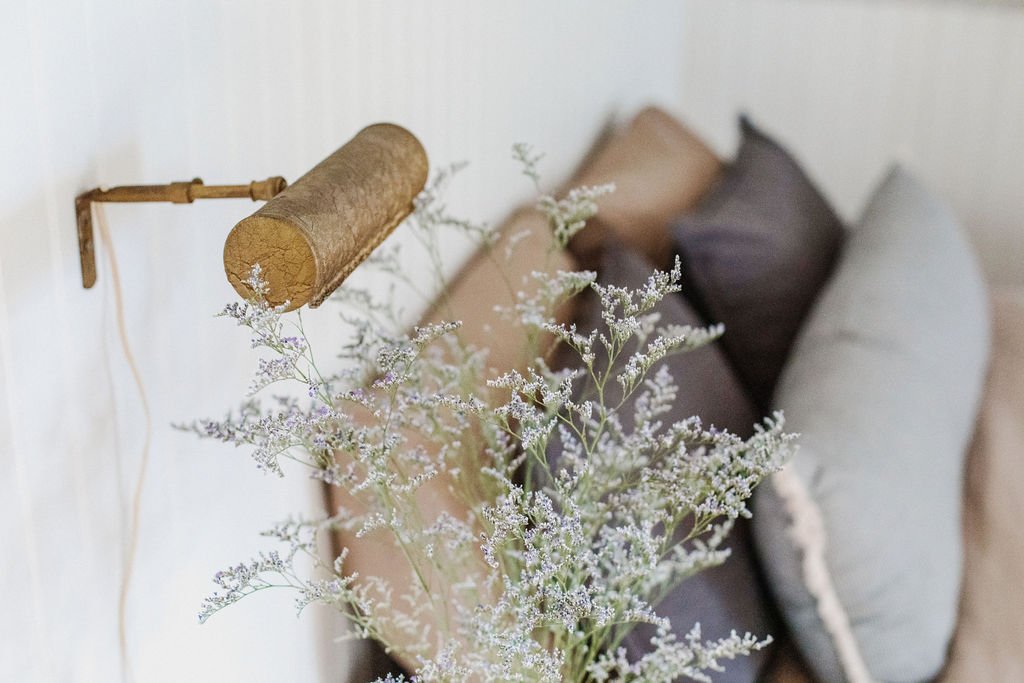
Why it works: Vintage light fixtures like chandeliers, sconces, or pendants add character and authenticity to your home. They create a focal point while enhancing the period details.
How to use it: Try a statement chandelier in your dining room or add brass sconces in the hallway for a touch of old-world elegance.

Why it works: Decorative tiles, often found in entryways and bathrooms of older homes, add personality without overwhelming the space.
How to use it: Use patterned tiles in small areas like your bathroom or entryway to bring in a touch of historical charm that still feels fresh and unique.

Why it works: Shaker cabinets have stood the test of time because of their simplicity and durability. They blend seamlessly into older homes.
How to use it: Add Shaker cabinetry to your kitchen or bathroom for a timeless, tailored look that keeps things simple and functional.

Why it works: A freestanding bathtub, like a clawfoot tub, brings elegance and luxury to any bathroom, and has been a symbol of classic style for over a century.
How to use it: Incorporate a freestanding tub as the centerpiece of your bathroom to bring back the charm and relaxation of a classic era.
Want to bring some timeless design into your home?
Whether you're working with a charming 1800s farmhouse or a beautiful 1900s home, these design elements never go out of style. Reach out, and let’s talk about how we can incorporate these classics into your next project!
As I travel through the countryside, I’m always captivated by the sight of old barns and out building standing proudly in their original form. These barns, unlike renovated homes, have remained largely untouched since the day they were built. They are a testament to the craftsmanship and hard work of those who came before us, embodying a sense of history and heritage that’s often overlooked.


Saranac, NY.
I find it fascinating to see these barns as they were, their weathered wood and timeworn beams telling stories of an era that’s gone. The way these structures were carefully crafted by hand speaks to a level of dedication and skill that’s truly inspiring.



Saskatchewan, CA
As an interior designer specializing in reviving farmhouses from the 1800s and 1900s, I see a deep connection between these barns and the homes I work on. Both reflect the values and traditions of their time, and both deserve to be preserved and honored. Just as I appreciate the craftsmanship of old barns, I’m equally passionate about restoring and revitalizing century old homes, blending their rich past with modern comforts.
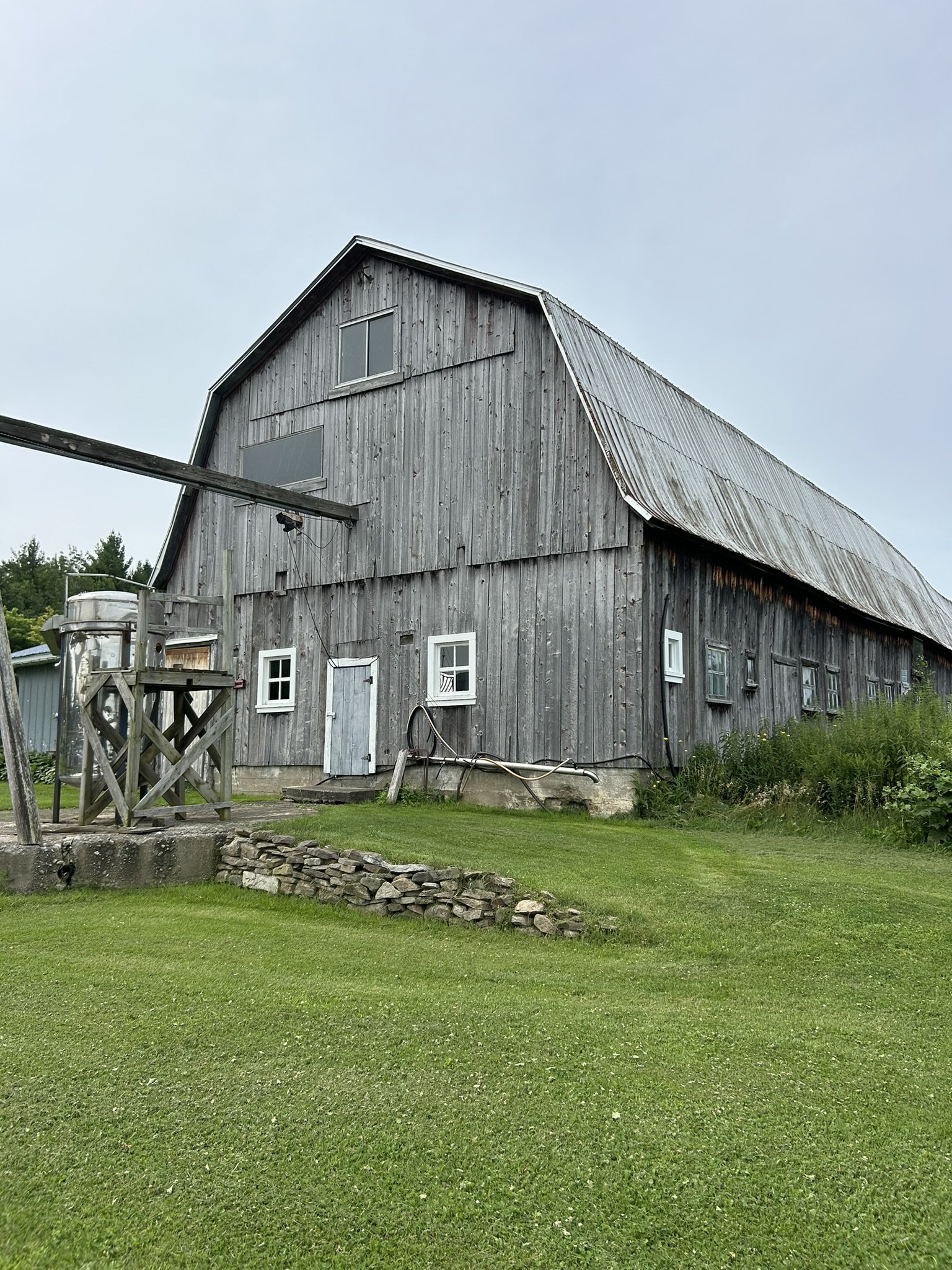

Visit: Le Lavandou, Franklin Qc
I wanted to share with you some of the barns I’ve captured over the past few summers, hoping they inspire the same sense of admiration and respect for the way things were once done by hand. These photos are a reminder that history is all around us, in the humble structures that continue to stand the test of time.




Hinchinbrooke, Qc
I thought it might be nice to include a few photos of our own barn, built in 1923 in Hinchinbrooke, Quebec. If you're curious to see more of the history we’ve embraced at home, you’re welcome to explore the renovations of our 1830’s farmhouse here.
As I explore and admire these barns, I'm reminded of the importance of preserving original elements in our homes. Just like these barns, your home has a history and character worth saving.
If you're considering a renovation, I invite you to check out my blog post, Renovate with Heart: 2 Reasons to Keep Original Elements. It dives into why preserving the past can add depth and meaning to your space. Click here to continue your journey and discover more about my design philosophy!
When renovating, I often find that the personality and stories within a home can get lost. It's easy to get swept up in the excitement of new designs and modern upgrades, but there's something uniquely special about maintaining the original features of an old home. Here are two good reasons why preserving these elements is so important.
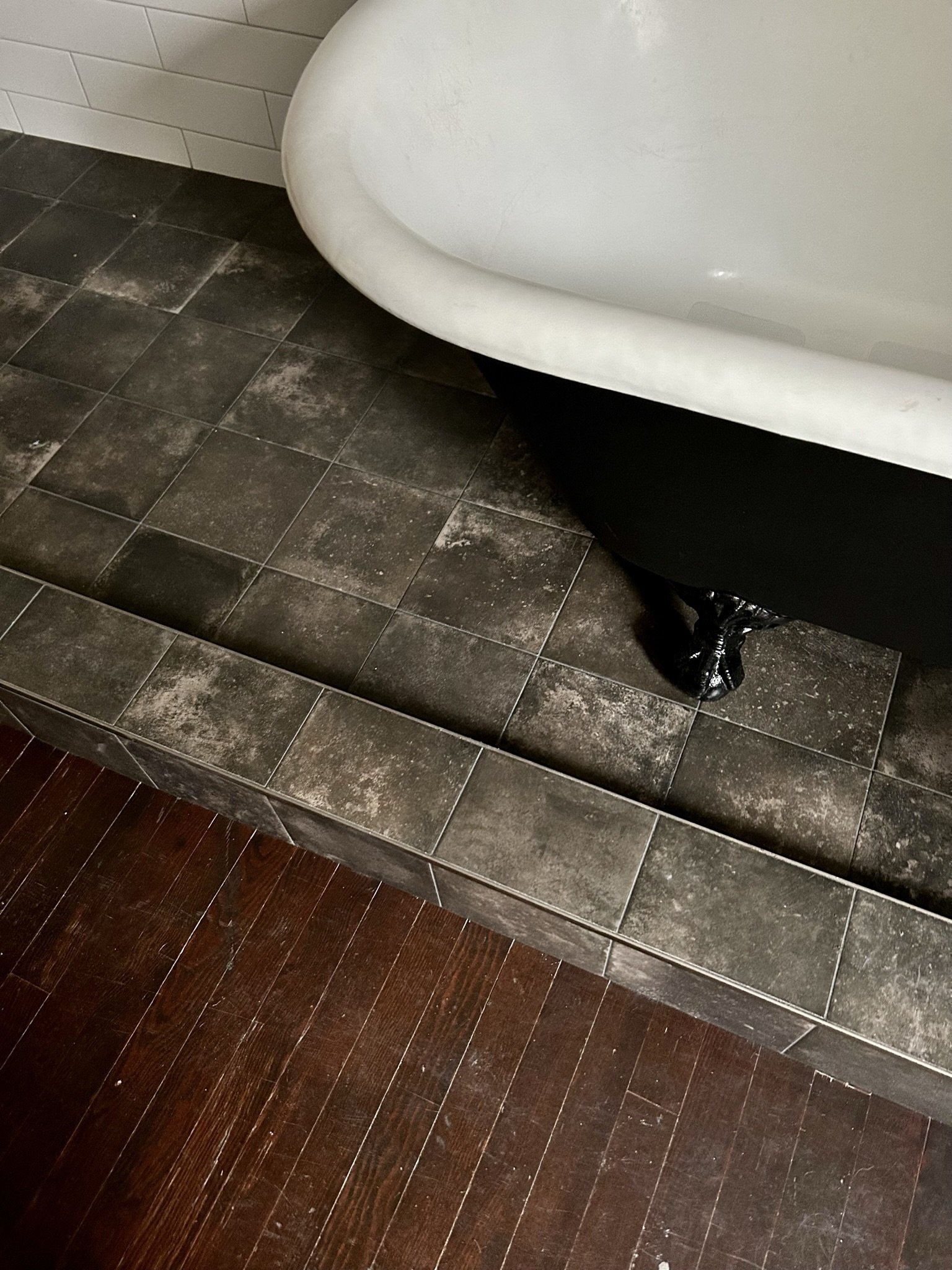

Every old home has a story. The original wood floors that creak underfoot, the solid wood doors that have welcomed countless guests, and the intricate moldings that add character to every room—these elements are more than just materials; they're a connection to the past. By keeping these features intact, you hold on to the history and charm that make your home unique.




Old homes were built to last. The quality of materials used back then—solid wood, sturdy hardware, and detailed moldings—is often superior to what's commonly used today. These elements not only add timeless beauty to your home but are also cost-effective in the long run. By preserving them, you invest in materials that will last a lifetime, saving you money on future replacements and repairs.
In a world that constantly seeks the new and the now, there's something truly comforting about honoring the past. By keeping the original elements in your old home, you ensure that its personality and history continue to shine through, creating a space that's both beautiful and meaningful.

Ready to discuss how you can update your home while preserving its unique charm? Book a free 20-minute call with me to explore your renovation ideas and discover the best ways to blend history with modern comfort.
Growing up, I was captivated by century-old farmhouses and the rich stories they held. But then, when we renovated our 1830s farmhouse, it truly hit me—The importance of preserving history within the walls of our homes. Original hardwood flooring, moldings, doors, and hardware; these elements are worth saving.
This deep-rooted passion for blending old and new is one of my anchors as a designer. For me, design is about honoring the story behind your home and crafting deeply personal spaces that enhance daily life and make it easier.
If you have an old home that you'd like to update, you might be wondering how to get started—and the whole thing can feel a little daunting...
How much will the renovation cost? What kind of tiles should I pick? Can I keep my original wood floors?
In this blog post, I’ll share how we approach the design and implementation phases of renovating old homes, ensuring they retain their unique charm while meeting modern needs.
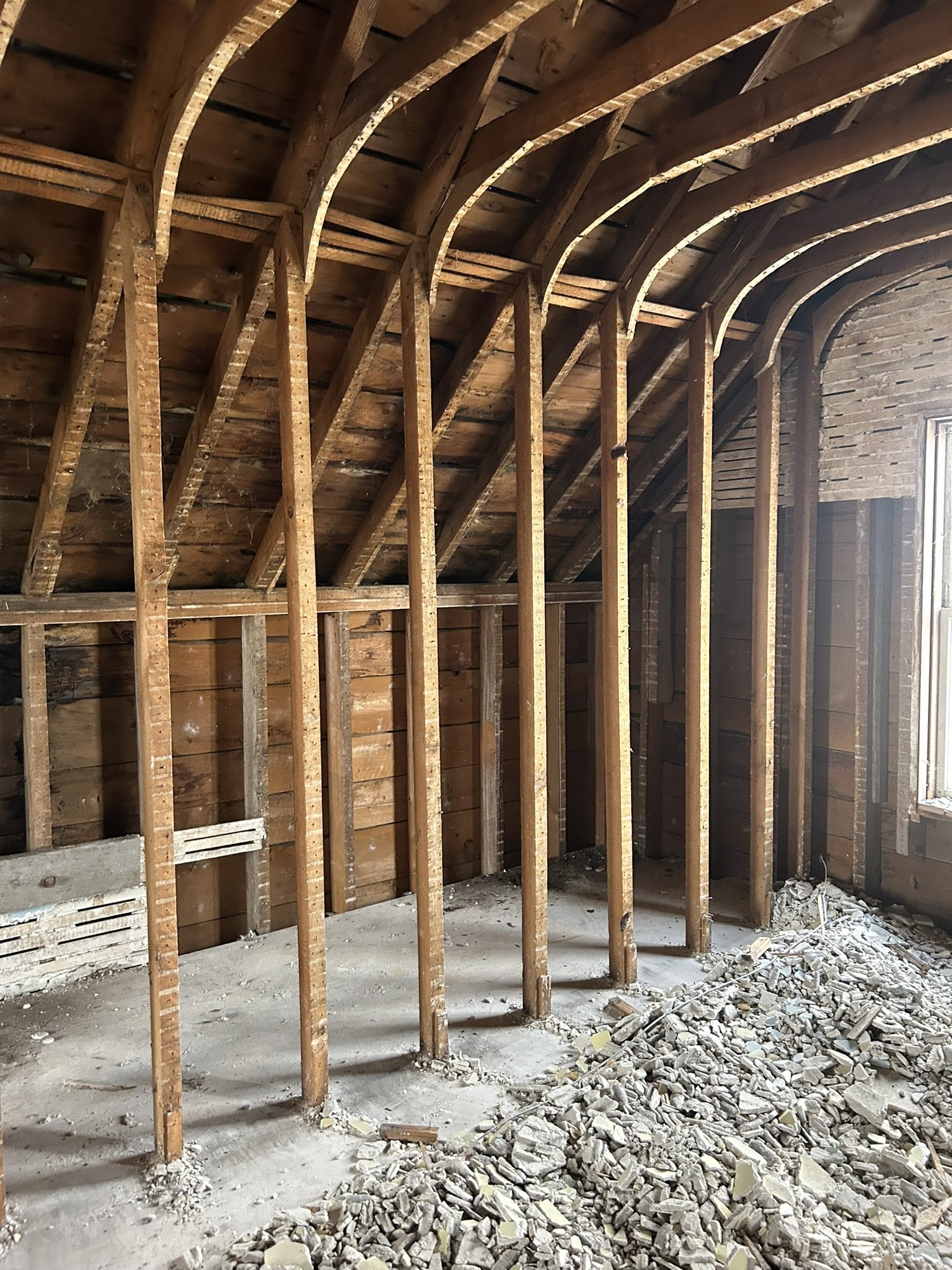



We specialize in working with old homes because we recognize the unique character and craftsmanship these houses possess. There’s no denying that these homes were built to last and with pride, and it’s our privilege to breathe new life into them, ensuring they meet the demands of today while preserving their rich history.
01 Handcrafted Details and Quality Hardware: Many old homes, especially those from the 1800s and early 1900s, feature handcrafted woodwork, such as intricate trim, moldings, and built-in cabinetry. This craftsmanship is often difficult to replicate today. The hardware in these homes, such as doorknobs, hinges, and locks, were typically made from high-quality materials like brass, bronze, and wrought iron. These pieces were often handcrafted and designed to last, providing both functionality and an elegant touch to the home’s decor.
02 Solid Wood Construction and True Dimensional Lumber: Unlike many modern homes, older homes were often built with solid wood, including hardwood floors, doors, and framing. This contributes to their durability and longevity. Additionally, older homes were built with true dimensional lumber, meaning the wood was cut to full 2x4, 2x6, etc., dimensions, making the structure stronger and more robust.
03 Locally Sourced Materials: Many old homes were constructed using locally sourced materials, including stone, brick, and timber. This not only reduced costs but also gave each home a unique character reflective of its region. Old brick and stone farmhouses are prime examples of enduring architectural styles. These homes often feature thick, solid walls made from locally sourced materials, which provide excellent insulation and durability.


Renovating a home is an exciting journey, but it can also be challenging. From navigating through the messy middle to making countless decisions, the process can feel overwhelming. That's where Anika Schachtler Design comes in. We understand the emotional rollercoaster that comes with renovating, and we're here to guide you through it. Our services are designed to save you time and give you peace of mind. We ensure that every aspect of your project is executed to perfection with our thorough communication and attention to detail.

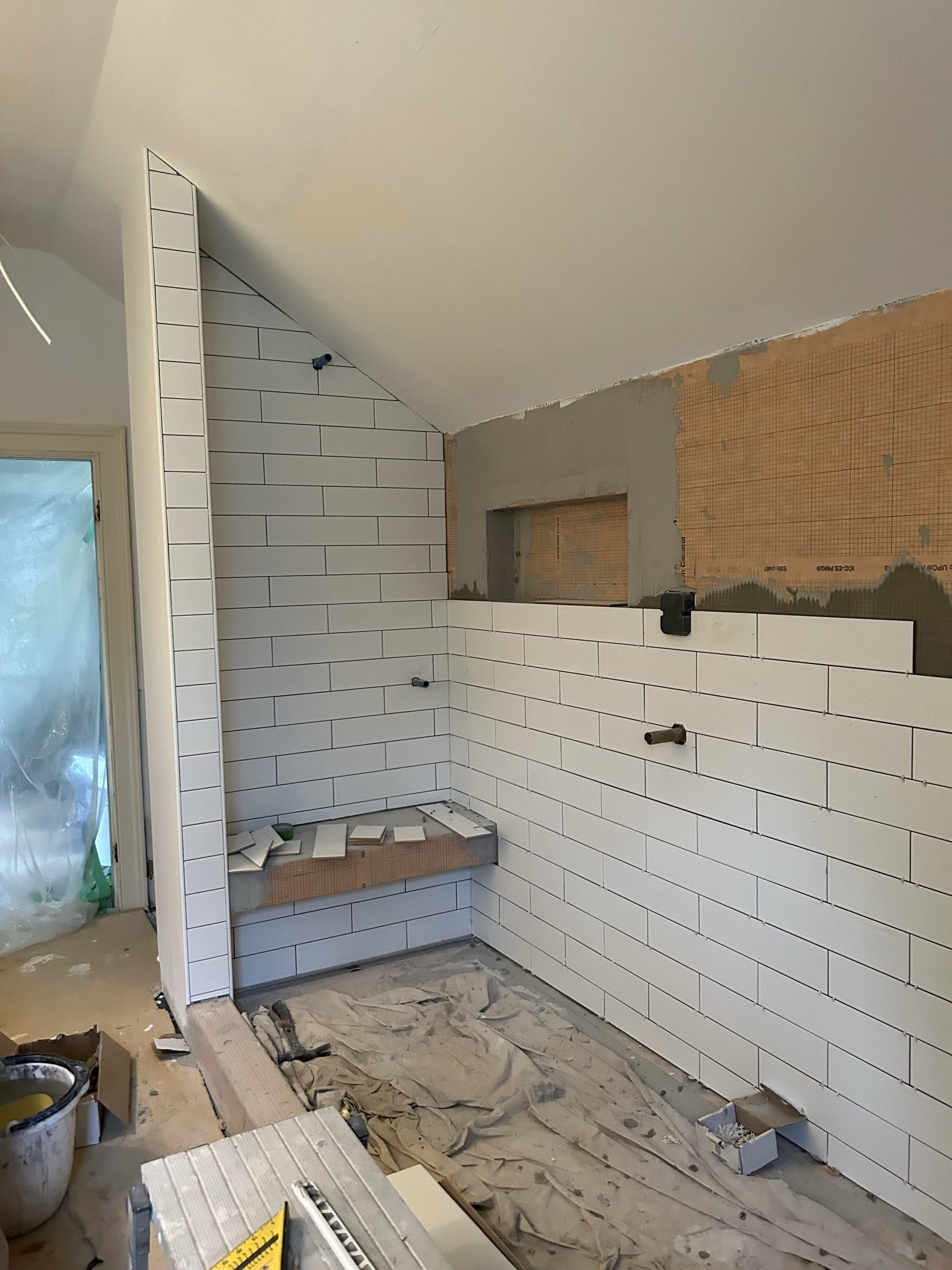
Here’s how we help during the implementation (renovation) phase:
We conduct regular site visits to ensure that the design is being implemented correctly. These visits allow us to address any on-site issues promptly, ensuring that your project stays on track.
We provide continuous support via calls and emails to answer any questions and resolve any concerns during the renovation process. We’re here to provide guidance and assistance every step of the way.
Our team coordinates with all subcontractors involved in your project. By overseeing the quality of work and ensuring smooth execution of the design, we guarantee that every detail is meticulously attended to.
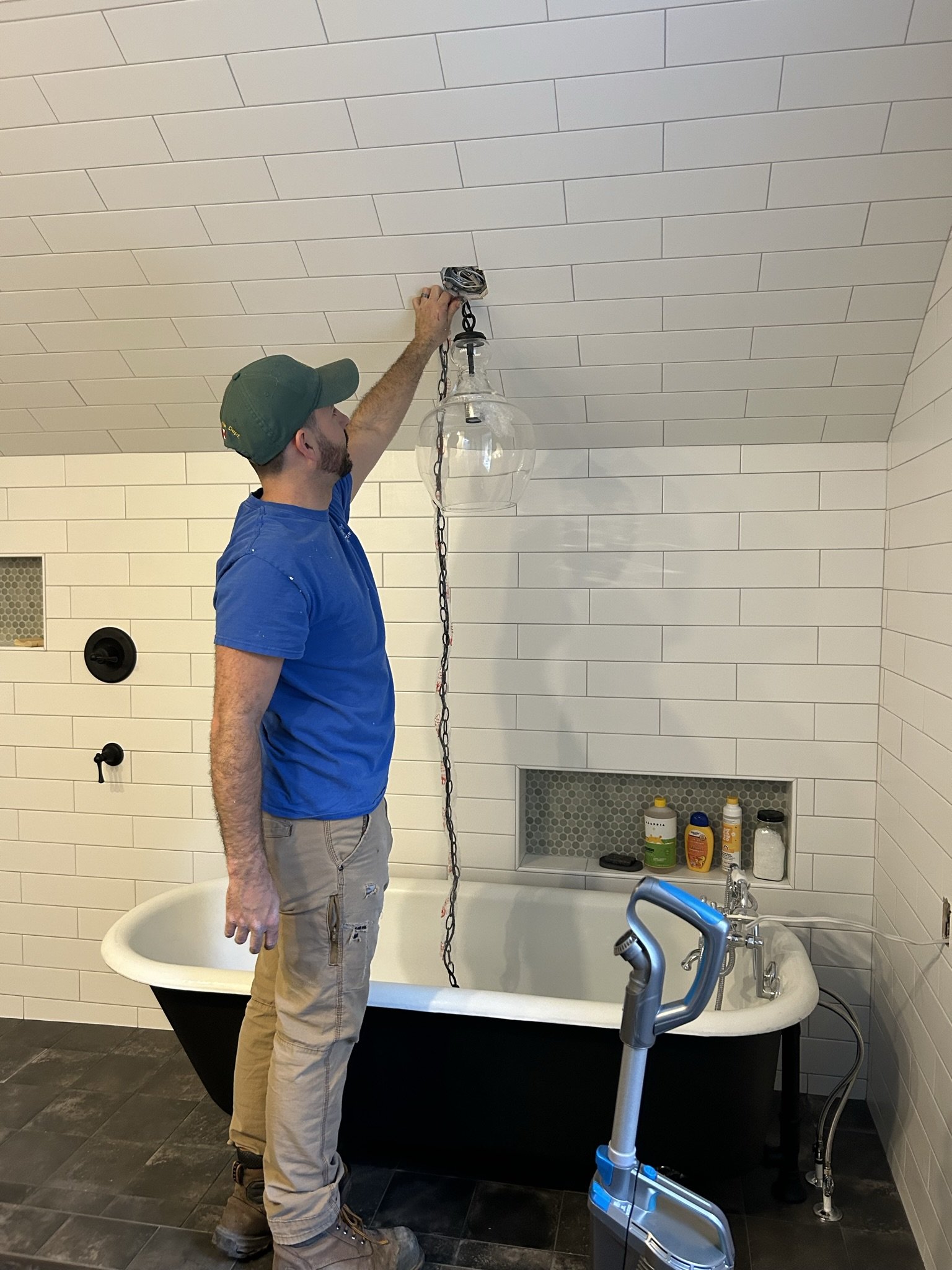

From showing the tile installer the perfect pattern to coordinating with the electrician for the exact height of each light fixture, we're there every step of the way. Our goal is to make the renovation process as seamless and stress-free as possible.
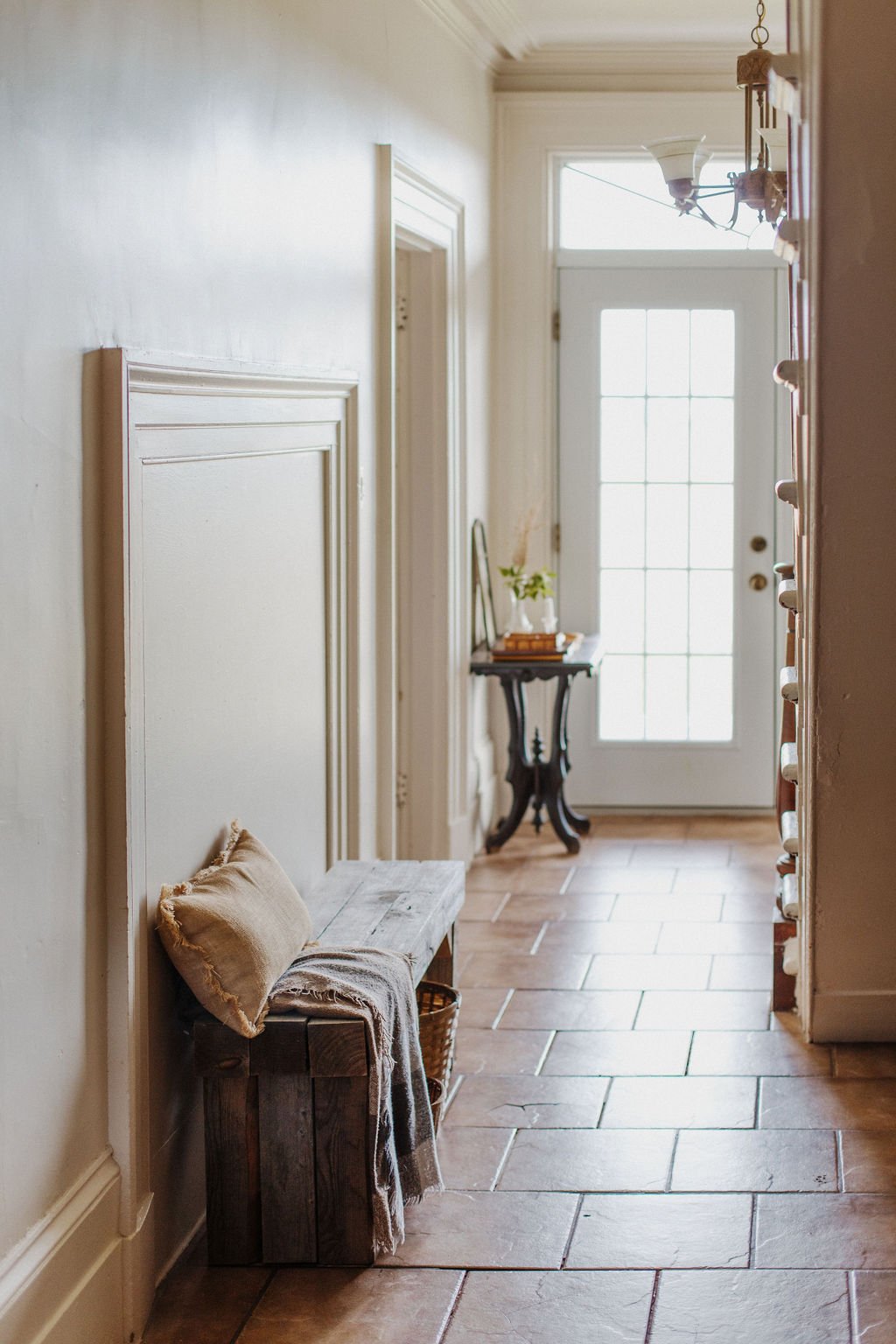

Let’s connect! Book a free 20-minute discovery call with us today to discuss your project and how we can help bring your vision to life. FILL OUT THIS FORM
And don’t forget to download our FREE GUIDE, where you’ll find valuable insights and tips to help you navigate the renovation process with confidence.
Together, let's revive your old home and make it truly yours. We can’t wait to embark on this journey with you.
Preparing for your first interior design consultation is an exciting step towards transforming your space. Our goal is to make this process smooth and enjoyable for you. Here’s a detailed guide on what to expect and how to prepare.

Our process is designed to ensure that we fully understand your vision and preferences before diving into the design details. Here are the key steps:
Questionnaire: We'll begin by gathering information about your style, preferences, and vision through a detailed questionnaire. This helps us get a clear understanding of what you want to achieve with your space.
Discovery Call: Next, we'll schedule a 20-minute call to discuss your ideas, goals, and any specific requirements you may have. This call allows us to address any initial questions and set the stage for a productive in-person consultation.

The in-person consultation is a crucial step in our process. Here’s what you can expect:
Review the Space: We will meet for a two-hour session to thoroughly review your space. This hands-on evaluation allows us to understand the unique characteristics of your home and how we can enhance it.
Confirm Scope of Work: We will discuss and confirm the scope of work, ensuring we are aligned on the project’s goals and expectations.
Explore Design Possibilities: Together, we will explore various design possibilities, considering both functionality and aesthetics to create a cohesive plan that reflects your personal style.

A consultation is your opportunity to receive expert advice, guidance, and insights tailored to your specific project. We provide ideas, resources, concepts, and expertise to help you make informed decisions and move forward confidently.
If you aren’t ready to invest in our design packages starting at $1,500, a consultation can be booked as a stand-alone option, which many clients have found helpful.

Gather inspiration and ideas ahead of time, and allow yourself some time to think about your future space. We encourage you to make a list of questions before our appointment to ensure you are prepared.

Our two-hour consultation is a value-filled time for an exchange of ideas and information. You have an expert in your home, and we want to showcase our expertise in a valuable way to you. Please understand that this is only the first step in a process that includes many stages.
While we can instinctively feel what a room needs, we will also develop that initial concept into something more in the next phase. Design involves considering the space overall and how each element relates to the next. It’s about layering and knowing what works for the space, which requires a thought process and time to develop. This may include drawings, pulling fabric and color swatches together, or creating a concept board to see how elements relate to each other.

The in-home consultation is two hours and includes a summary delivered after the consultation by email. This summary is a PDF document that includes our discussion, thoughts, ideas, and suggestions for your space. For paint color consultations, a PDF document containing the color names, codes, and finish selections will be provided.

The next step will be discussed with you during the consultation. Depending on what was discussed and the scope of work, we will then put together a tailored proposal outlining the scope of work and the associated fee for your project.
Help us get to know you by filling out our inquiry form, and we'll reach out soon with the next steps to book a complimentary 20-minute call to discuss your project.
What, when, how and where are we eating?
How and where do we socialize at home?
The desire to live healthy and our growing knowledge of how daily habits affect our wellbeing are part of what influences the way we design kitchens today.



The move towards farm-to-table eating and the desire for local, seasonal, fresh and organic produce changes our storage needs, increases preparation area and encourages indoor kitchen gardens. Our changing attitude towards waste also needs to be accommodated. There’s also interest in air quality and visual and audio noise reduction as a way to calm our busy minds.

There’s a huge social aspect to the kitchen too. Kitchens are increasingly becoming integrated within the home. The entire floor plan is being rethought with the desire for open-concept style spaces in order to connect and gather and take part in the food preparation.
A wellness kitchen is a type of kitchen designed to promote health and well-being. It focuses on creating a space that supports healthy habits and lifestyles. Let’s look at some feature to include:

Creating a sociable kitchen will ensure that time spent with friends isn’t interrupted. Cooking, drinking and relaxing can all be enjoyed in one room. An island with seating is the ideal layout to encourage lingering and socializing in the kitchen.
Mindful moments can be as simple as selecting a comfortable chair facing out to the garden, allowing you to connect with nature and reminding you to take time to relax.

De-cluttering brings a sense of calm. Think about an appliance garage. This is where the food processor, industrial-size mixer, coffee maker, toaster oven and any other everyday appliance that requires a lot of space can be tucked away out of sight by a flip-up hatch or custom cabinet.
Begin an easy & effective 3 step process to create more calm at home. Clear your mind and your home with this FREE GUIDE.

Make sure you create enough space in the kitchen cupboards and drawers for all the practical, less attractive items so they can be put away, leaving decorative open shelving to display your most loved objects.


The Right colors
Choosing soft, muted tones will help to give your kitchen a relaxed, mindful refresh. A soothing color palette of natural tones will introduce some calm to the room. Natural wood and green tones that are found in nature will automatically bring in a soothing atmosphere.
Having a wellness kitchen is important because it can inspire healthier food choices, reduce stress, and make cooking and meal preparation more enjoyable. By prioritizing health and wellness in the kitchen, you can improve your overall quality of life and well-being.
We can make small changes in many aspects of our lives to ensure we maintain a healthy mind. Let’s start in the kitchen.

Book a complimentary 20-minute call to discuss your project.
An information-filled session where we will discuss your project, provide an overview of the design process, and to answer your questions.
In the world of designing interiors, there's something special about mixing old charm with modern style. It's like creating a cozy, peaceful space that feels both classic and new at the same time.
Our approach to design is all about making rooms calm, relaxed, and welcoming, blending together vintage pieces, modern touches, soft textures, and lots of greenery.
But before we dive in, let's make sure we're on the same page with some design terms.
When we say "vintage," we mean things that are really well-made and remind us of times gone by, usually from about 30 to 100 years ago. On the other hand, "antiques" are even older, more than 100 years old, and carry a piece of history with them.
And then there's "modern." It's not just about what's new right now; it can also refer to a design style from the mid-20th century that's still popular today.
Now, let's explore the fundamentals of achieving harmonious synergy between vintage and modern elements in interior design.


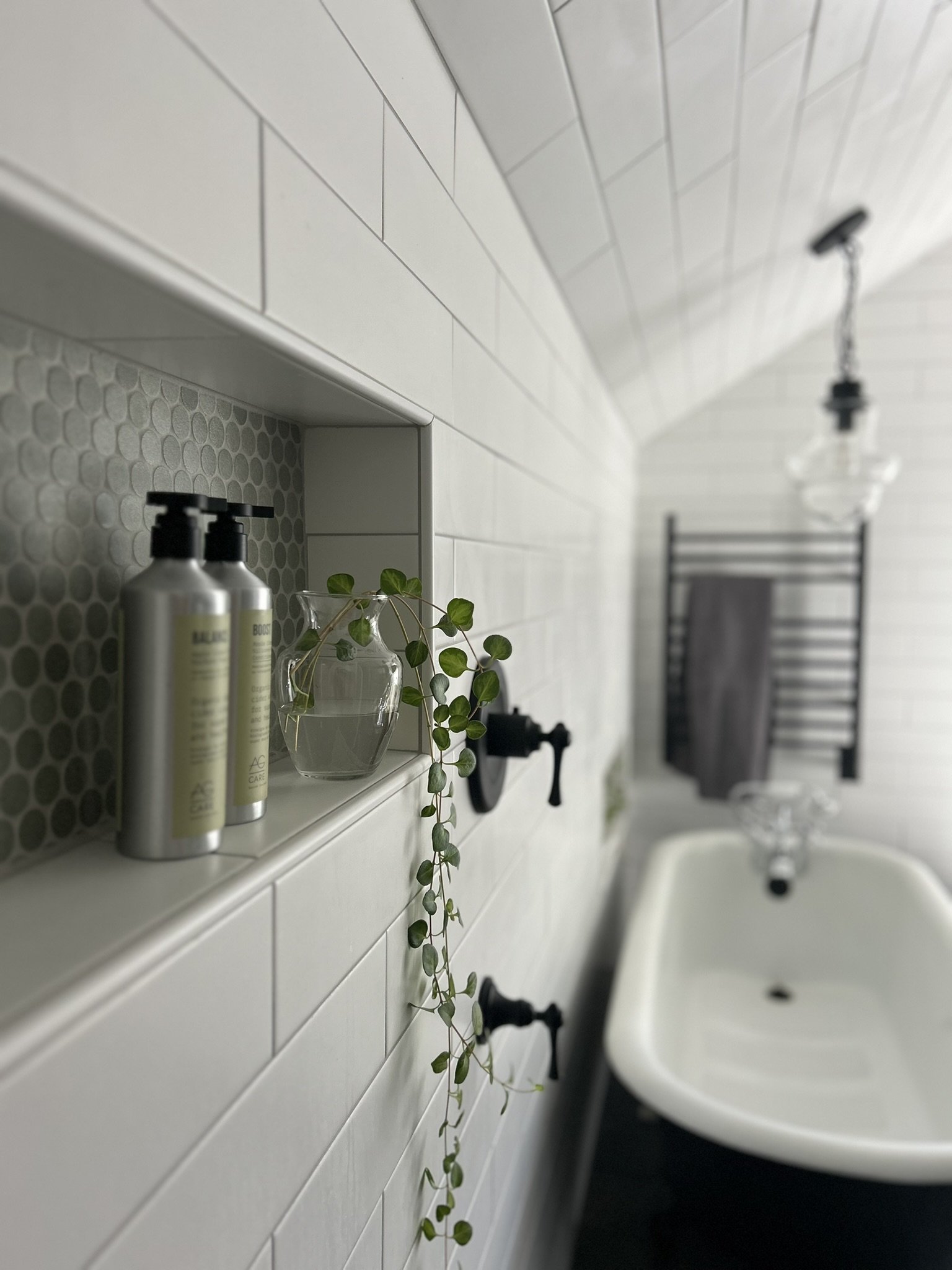

Great interior design that mixes old and new starts by determining the overall atmosphere of a space. Elegant, fresh, lived-in, relaxed, classic, timeless or natural are a few words that you may want to use to describe the feeling you want to achieve.
Choosing colors that help highlight your furniture and accessories without overwhelming the space is important. A neutral palette works well with lots of interesting individual elements. When mixing vintage and modern, there isn’t such a need to add dramatic color to your walls.



Strike a balance. Combining vintage with modern can make a space look like it has evolved over many years.
Mixing old and new pieces can give your room a warm, lived-in look, but it's important to find the right balance. You don't want it to feel cluttered or chaotic. By carefully choosing which vintage pieces to showcase alongside your modern ones, you can create a space that feels calm and harmonious.
Download the exclusive checklist featuring my Top 10 Styling Items. Use these simple, timeless, and versatile items to effortlessly craft arrangements throughout your home, seamlessly bridging the gap between vintage and modern.


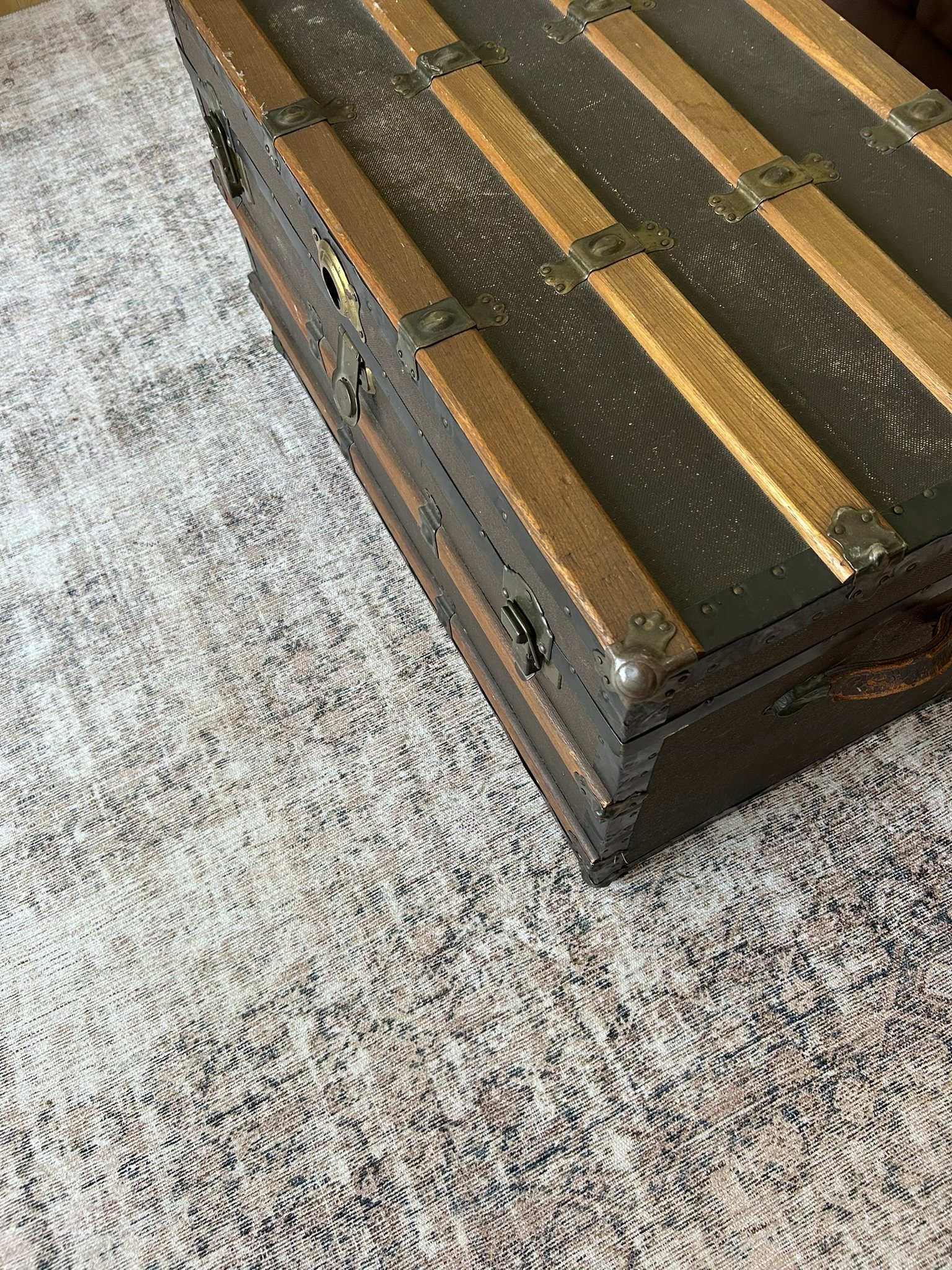
To give your room depth and personality, think about adding different layers of texture and detail. This could mean using cozy rugs, large wooden furniture, and soft lighting to create a comfortable atmosphere. And don't forget about the details—like pretty vases, handmade ceramics, and books—that add those special finishing touches.
In the end, blending vintage and modern pieces is all about creating a space that feels peaceful and inviting. With a little thought and attention to detail, you can design a room that's both timeless and full of character, where you can relax and unwind in style.
Partner with Designer to Craft a Home Bridging Modern Sophistication and Vintage Charm

Explore what to expect and break down three common myths about working with an interior designer in THIS comprehensive guide.
Shop and buy with purpose.
When you shop women-owned businesses, you support female entrepreneurs and the entire community. You’ll also receive top-notch customer service!
Women tent to be good at picking up social cues and reading emotional situations. Running a business with a greater consideration for the people we interact with—including employees, customers, suppliers, etc.—makes for better leaders. Women seem to naturally understand this. They want to take care of the people and the community, and they sincerely treat people with respect.
Also we should talk about multitasking… Women seem have this ability to maintain multiple priorities and balance many different roles at the same time. They’re used to having a lot on their plate, and don’t turn away from the multifaceted day-to-day lifestyle of entrepreneurship.
"Every woman's success should be an inspiration to another. We're strongest when we cheer each other on."
— Serena Williams
I wouldn’t be where I am today without the support of some incredible women along the way. My entrepreneurial journey has been inspired by women near and far who have shared their journeys, stories, and insights. And with that, I'll continue to work hard and dream big.
So, in celebration of International Women’s Day, let’s shine the spotlight on a handful of women-owned businesses right here in the Chateauguay Valley.
Summer Eastwood
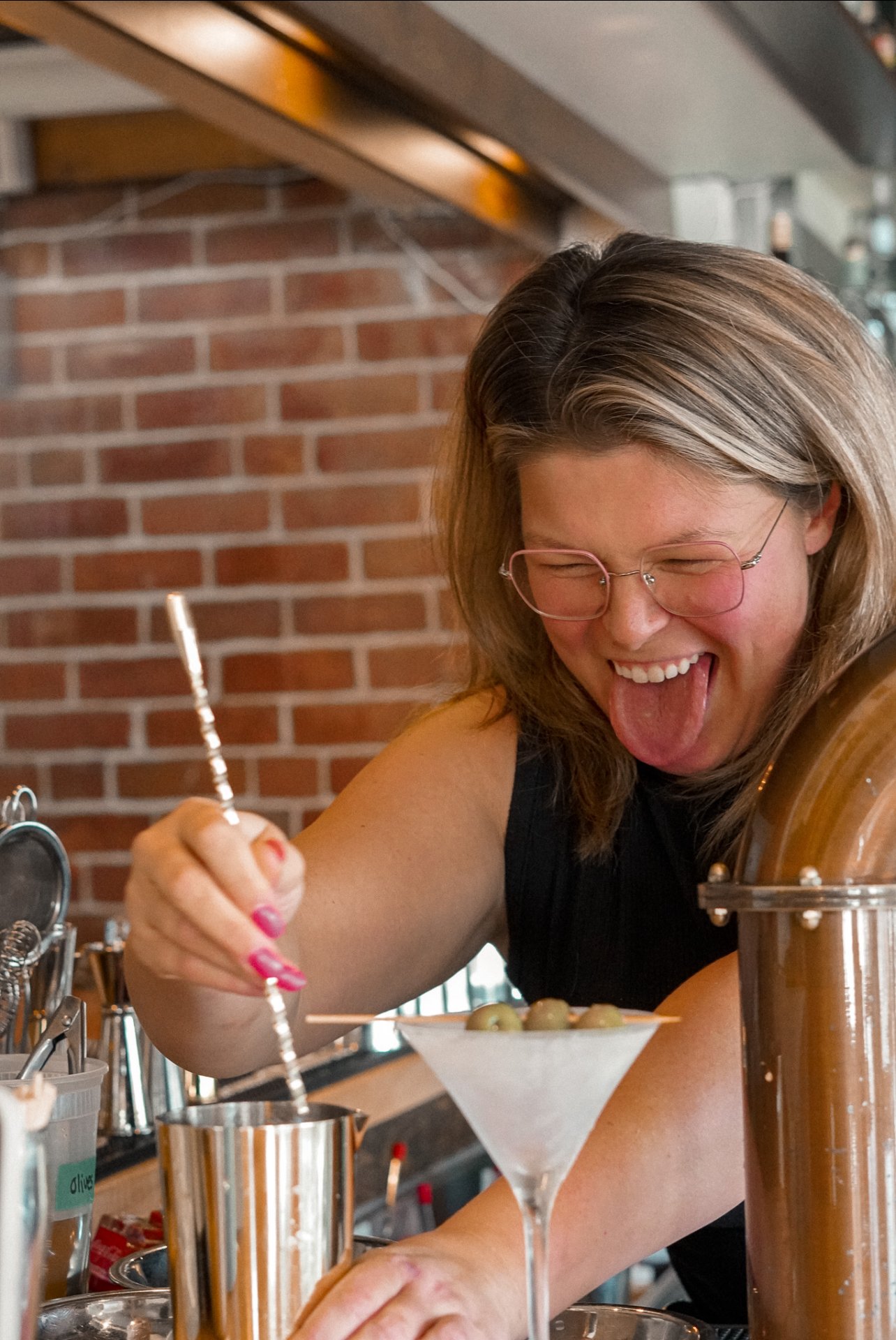

Photos from Ely Lemieux

The time you decided to go for it:
Like so many entrepreneurs, I spent a good amount of time saying “someone really ought to…” and that someone ultimately turned out to be me!
My heart & passion are for the Chateauguay Valley, showcasing the beauty of the land but especially, it’s people.
It’s my hope that the projects I’m involved in always make our home shine a little brighter.
Location:
24 Rue Bridge Ormstown
One piece of advice:
Follow your intuition, only you can see your vision and to achieve it you have to believe it.
Quote that inspires you:
“If you want something said, ask a man; if you want something done, ask a woman.”
- Margaret Thatcher
Happy International Women’s Day to all the women getting it done!
Marie Shewchuk



The time you decided to go for it:
Growing up in Herdman and working here as my first summer job; I knew the potential that this store had. Having a background in cooking and catering, I knew this could be the perfect spot for all of these dreams to come true.
Struggling always with jobs I wasn't fully happy doing, this has truly been what I was looking for all my life.
When my brother asked if it was something I would be really interested in, he made it possible by purchasing the building and help make this dream possible.
Location:
1939 Rte 202, Hinchinbrooke
One piece of advice:
Its never too late to find something that truly makes you happy!
Quote that inspires you:
“If you can dream it, you can do it.” —Walt Disney
Rebecca Amrein

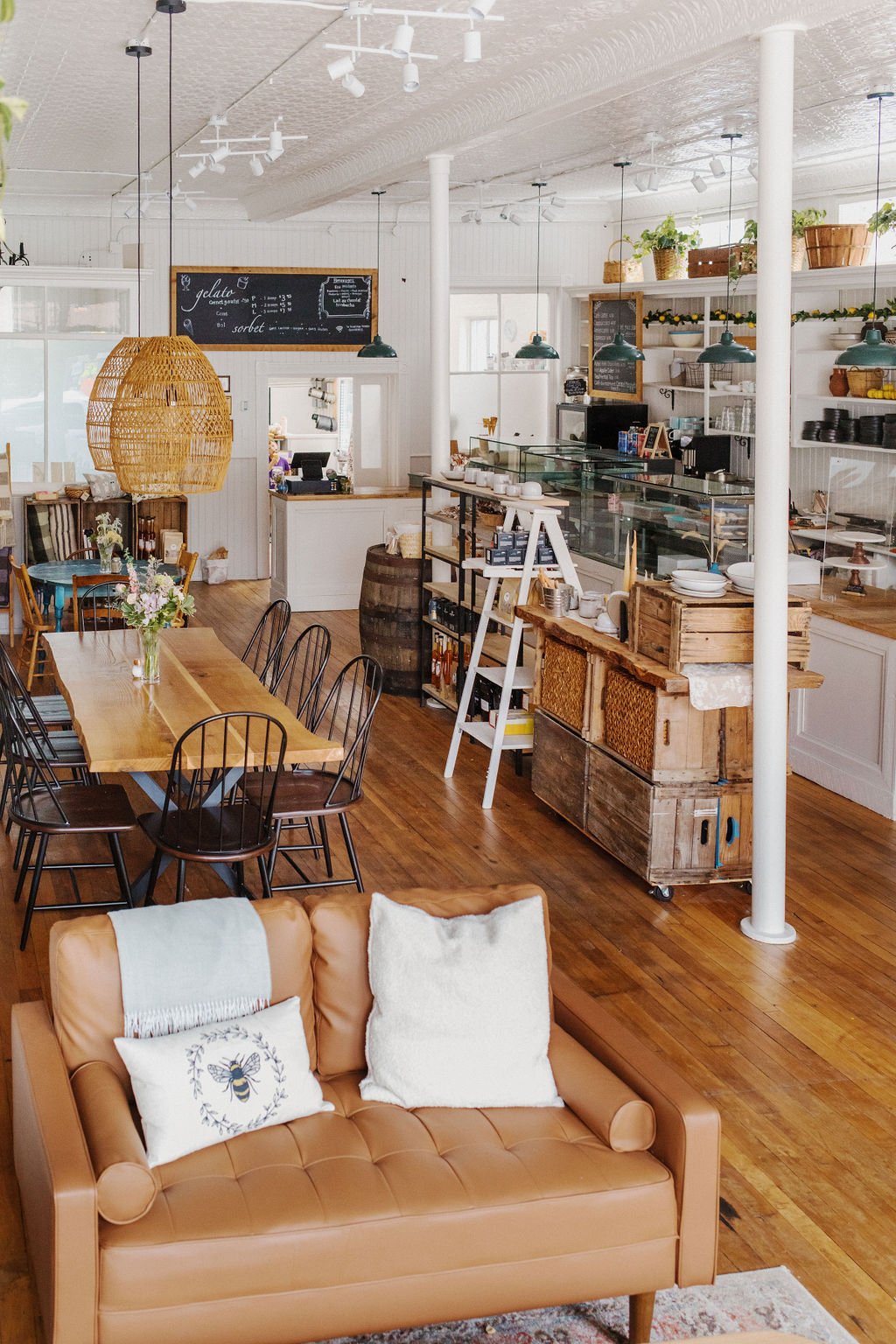

The time you decided to go for it:
While I lived in Europe, my passion for chocolate and high quality pastries began. I saw so many of the beautiful pastry shops and cafes there, but could never find a place similar in our area. That’s when I realized I needed to create it myself.
With a background in farming and love of great food, it inspired me to to take the leap and turn my passion into reality, sharing it with our community and creating a space where everyone can gather.
Location:
45 Rue Lambton, Ormstown
One piece of advice:
Focus on quality, consistency, and customer experience. Building a loyal customer base starts with being passionate about what you do, delivering exceptional products and service every single day.
Quote that inspires you:
“Life is short, eat dessert first”
Sylvie Dumas



The time you decided to go for it:
I have almost always been self-employed…Event organizer, wedding decorator etc.
In 2006, my employer of the previous 3 years, decided to sell his sign shop. I thought this was the perfect opportunity to buy him out and continue in this field I had just discovered and loved! Making signs, graphic design and lettering vehicles.
Location:
3189 Rte 138, Ormstown
One piece of advice:
There is room for everyone in every type of business, don’t worry about your competitors, just do a good job and offer great customer service.
Quote that inspires you:
“People don’t succeed unless they have fun at what they are doing.’’ - Dale Carnegie
Sarah Beaupré

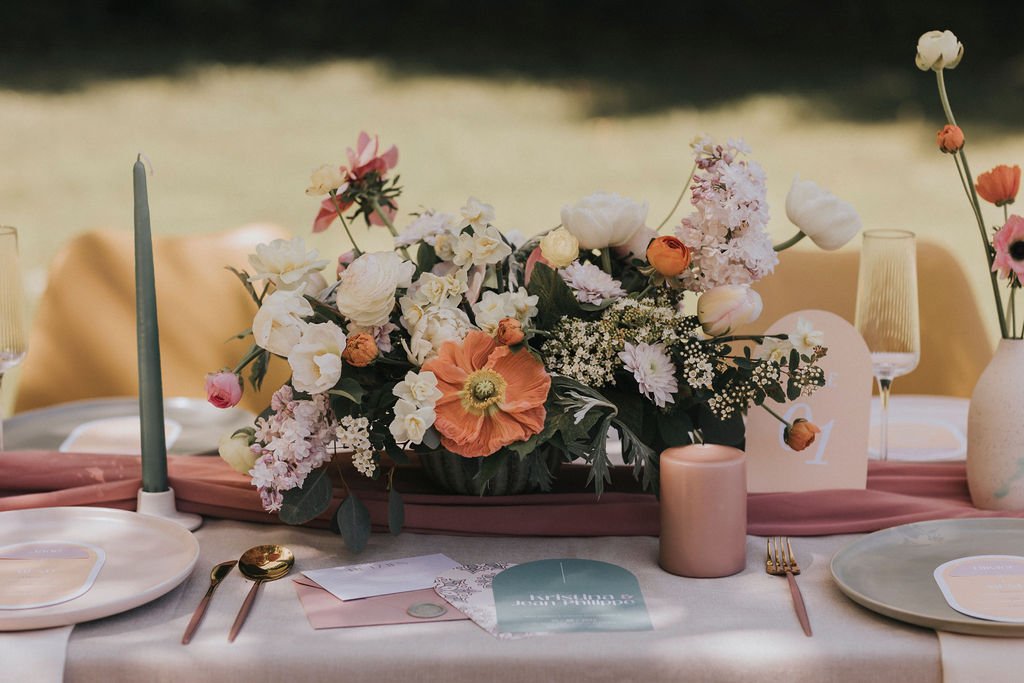

The time you decided to go for it:
I always told myself that I would NEVER be a farmer. In 2019, my parents told me about a cut flower project and it immediately spoke to me. I have been completely invested in the family business since and I still do not regret this choice. Although growing flowers brings its share of stress, the reward is sweet and beautiful. Even after more than 10 years of seeing dahlias every year, I still find them just as beautiful.
Location:
504 Concession Quesnel, Saint-Anicet
One piece of advice:
Grow slowly, but continuously.
The pandemic caused us to grow very quickly. It was good because we had a lot of popularity at once, but we grew a little bit suddenly. We neglected some tasks that we now have to start again. By growing more slowly, it is easier to do things right from the start.
Quote that inspires you:
I don't really have a quote, but I often repeat this mantras to myself: be true, honest and kind to others through your words and actions and you will be rewarded in some way.
Adele Brunet



The time you decided to go for it:
I started working with my dad when he started needing a bit of help, (I was working full time in Montreal at the time as a paralegal) so I started working with him 1 day a week. What gave me the push was the fact that I realized that I loved the work! Keeping up the family business was important to me also but there was never any pressure put on from my dad to continue.
Location: 82 Rue Roy, Ormstown
One piece of advice:
Have confidence in yourself to run your business the way you want, no need to follow what other people say you should do. You are the one who will have to deal with the consequences of your decisions. When I started in the business there were not very many women in the industry, it was very male dominated. It was daunting but I liked the challenge.
Quote that inspires you:
"Be confident, not certain." —Eleanor Roosevelt
Hanna Rankin



The time you decided to go for it:
I started making pottery in 2016. It was always a "side gig" until I grew my business to the point where if I wanted to continue growing, the only constraint was my available time. I was burning out in my corporate position, so with some sacrifice, support from my family and a whole lot of hope I jumped! No regrets!
Location:
Franklin, shop coming soon!
One piece of advice:
Just start. Whatever your dream is, the moment where everything lines up rarely comes to you, you need to make it happen. You are capable. Create measurable goals for yourself within realistic timeframes and get going!
Quote that inspires you:
“Be happy with what you have while working for what you want” — Helen Keller
Women make great business owners. Follow your passion, add value, focus on serving, run with your creativity and don’t be afraid to take risks.
Show your support by sharing this post!
We know that a lot goes into creating a meaningful home...
If you’ve ever found yourself wondering how to pull everything together in a room, what to focus on and how to get started creating spaces that look beautiful, you’re in the right place.
Today I’m answering your top decorating questions. Keep reading.


Focus on these three words:
Still wondering what the exact elements are to make your home finished? It’s what you decide for your space. Take a look at just one room at a time and notice what’s there, also what’s not there. Do you have any items with character, anything meaningful or personal to you? These “extra” details will often pull a room together, making it feel cozy, complete and truly yours.
Another way to instantly make a room feel finished is to bring in nature. Add a potted plant, cut branches or florals to add life, texture and to soften the look of the room, making it feel complete.
9 small businesses that sell home decor in the Chateauguay Valley


Find unique, custom-made, hand-crafted, natural, high-quality and sustainable decor for your home.


It’s important to notice how certain colors make you feel and also how you might want to feel in certain rooms.
Often I suggest muted, soft tones for the walls (light warm gray & creamy white, etc.) to create a calming and welcoming atmosphere. Darker colors that have warm tones are also great and work well for furniture and rugs (dark leather sofa, patterned rug, etc.)
Add accent colors through accessories so that you can switch out this color to create a new look for your room seasonally.


Transform the way your home looks through styling. Styling is an “activity” where you gather decor and accessories throughout your home, then rearrange it in your space to completely change the way your home looks without buying anything new!
It’s all in these little details that pull your space together. Throw blankets and pillows, decorative vessels and jugs to display florals and plants and unique, or meaningful decorations that reflect who you are and what you love.
What’s exciting about styling is that nothing is permanent (and it shouldn’t be). Swap pieces in and out as the seasons change or when you discover new treasures to decorate your home. Either way, with styling you’ll always be able to have a fresh look in your home when you want it.

Bring a sense of peace to your lifestyle without the frustration of what to buy & how to arrange it.
Turn your home into an extension of your personal style and create interiors that feel like you.
When you truly understand yourself and your personal style you can create your best spaces and it won't matter where you bought decor and how much you spent. You will feel at home, enjoy your space and make updates to decor and furniture with so much ease.

The best homes have something special about them. They feel relaxed, effortlessly styled and a true representation of the person living there.
Styling is the finishing touch that takes a space to the next level. It’s the at of arranging objects to elevate any space. I think that it’s how we can create meaningful interiors and bring more beauty into our everyday lives.
Below are three secrets to creating your best spaces at home.

Make your interiors feel just like you. Your story, background and uniqueness. Connect with your creativity, what you love and what lights you up. Tell a story within a space by displaying unique pieces and pieces that hold meaning. Family heirlooms, vintage finds and souvenirs from your travels.
Stop gathering inspiration. Yes, it’s a good starting point to watch what others are doing, and how they are doing it. But there comes a time when you need to create from within.
When you understand your personal style you begin to elevate your home with ease. Your home will feel good to be in too.
Click HERE for a list of the top 10 decor staples you need to create your best spaces

Use what you have. The objects you select and how you arrange them are key to creating a space that is engaging and enticing.
Reconnect with what you already own, and rediscover long-forgotten treasures that were stored away in a closet, basement or back of a cabinet.
"Have nothing in your houses that you do not know to be useful or believe to be beautiful" was once said by the famous textile designer William Morris.
Focus on using what you have to create displays that are visually pleasing.


Empty space is good. Intentionally leave “blank” space with your decor. Moments of “pause” allow us to appreciate the beauty of the items displayed.
We often have a tendency to add too much. Our eyes need a visual break, if there’s too much going on visually we start to feel overwhelmed. Create a sense of ease and remember that less is usually better.
Take a second look. Step back to look at your space from a bigger perspective. How do you feel? Is every inch of the surface you’re styling filled with items or have you left a portion of the surface empty? Always try to edit out items.
Styling requires trial and error. Test, adjust and keep going. Nothing is permanent, move things around and try new arrangements.
Click HERE for the free edit & organize guide. It’s a simple 3 step process to create more calm at home.
A feeling starts to unfold, driving down the lane, gradually heading towards the 1820’s stone farmhouse rich with original details and surrounded by farmland and maple bush.
Styling is a big part of creating a space that feels good to be in. I recently styled this local Airbnb, adding some final touches that will help guests unwind, relax and enjoy their stay in this authentic stone farmhouse.
If you’re interested in booking your stay here, head to the bottom of this post for the Airbnb link.

Ridgevue Retreat is steeped in history and character with a warm welcoming that starts outside.
The space was carefully restored, highlighting original pine floors and exposed stone walls with a final layer of decorative pieces to complete the authentic and natural space.

Continue to view the styled space, curated for a relaxing getaway.
Let’s continue inside




To create an inviting and comfortable living room, a soft textured rug was placed underneath the sofa to add a depth of color, which along with the upholstered ottoman, throw blankets and pillows, adds to the warm, casual look.

Because this property sits on a farm, I wanted to layer in subtle nods to its surroundings. All of the art displayed on the walls reflects pieces of the farm and its past.



The exposed stone immediately adds a dose of warmth to this bedroom. Soft layered bedding creates a balance of textures with the stone accent wall.

Neutral tones with touches of green and blue found in the art print, greenery and bedding help define this space.
It’s important to create a bedroom that feels restful, not chaotic.


The top 10 decor staples you need to create your best spaces.

Styling is the finishing touch that takes a space to the next level. Use these simple, timeless and versatile items to create arrangements throughout your home.

During the renovation another stone wall was also exposed in the bathroom, directly behind the large tub, creating a relaxing atmosphere.


Candles, a wooden bath tray and delicate greenery were some of the small, intentional touches included to set the tone.
Over all, the space was styled with simple pieces because I wanted to emphasize the natural charm of this house.


The kitchen look is simple and inviting. The look was elevated by styling with different glass jugs and glasses, pottery and fresh produce to add depth and texture to the countertop.



Textiles and accessories add hints of color to help liven things up the natural toned kitchen.

For added interest, a small canvas was placed above the shelf. These small details pull the space together, making it feel cozy and complete.

Slowly ease into the morning at this peaceful extension of the kitchen with a cup of coffee in hand, looking out and appreciating the natural views. Savor the quiet moment.

Since the dining space is positioned between the living room and kitchen I wanted to be intentional about the decor to give the space a little bit of significance in this open concept layout.



Fresh foliage clippings are displayed in a vintage vase and paired with a few candles which prompt guests to slow down, set a soothing atmosphere and enjoy a shared meal.
Colors and textures here complement the rest of the open concept space so that there’s a consistent flow from one area to the next.
It’s all in these little details that pull a space together. Throw blankets and pillows, decorative vessels and jugs to display florals and plants and unique and meaningful decorations. HERE is a list of timeless and versatile styling items to make spaces feel complete.
For details and to book your stay at Ridgevue Retreat click HERE
A peek into my personal creative space!
Follow along as we tour the newly renovated design studio and the why behind selecting this unfinished space to be my place of work.

An immediate feeling of peace sets in. The space is defined by the combination of light colors and materials, with a few personal touches layered in. It’s cozy and inviting in a fresh way.
We fell in love with an 1830’s farmhouse on a small acreage in Hinchinbrooke, Qc. The original house was enlarged with a modern style open concept living room and an unfinished sunroom that intrigued me from the very beginning. But we struggled to decide what the best use of this extra space could be.
This west facing sunroom is filled with natural lighting and overlooks the horse pasture and fields in the distance.
Maybe this could be my design studio…
→ A place where no artificial lights are needed throughout the work days.
→ A place where I can glance up at horses peacefully grazing away.
→ A place that is quiet and inspiring, where I can explore creatively.
This was it.
After claiming the space, the design planning started. It was important to create a design studio that felt like an escape from the rest of our home. I envisioned the look and atmosphere with calmness and tranquility.





The look was achieved with simple materials, first by starting with a foundation of wrapping the walls in pine, painted in a warm white to create a subtle texture. Ceramic tile with a soft beige veining was then installed in a brick-lay pattern, completing the neutral and natural feeling.





The modern sit to stand desk serves as a daily workspace. This is where brainstorming and focused work takes place. It’s paired with a beige herringbone patterned cowhide rug for added comfort and completed with a dark wood antique office chair passed down from my grandparents.




The round fiberglass table and chair set was also passed down and serves as a collaborative space. A large surface for laying out samples, designs, and to host meetings.
Since much of the design process stems from inspiration, this designated table is where everything can be viewed at once. Design books propped as inspiration for a particular project, paint swatches, fabrics, stone and wood samples, etc.
It’s where all the testing and decisions come together.




A custom cabinet was purposefully designed to look like an old armoire and tie in seamlessly with the surrounding paneled walls.
Open a world of inspiration! This is a library of materials where I can pull ideas from, explore materials options and begin piecing together design concepts.
A big dream for this room was to have it feel inspirational, creative, and functional. The space is cozy and inviting with intentional decorative pieces that hold meaning.
Create a meaningful home, true to your personal style.